2017-18 ANNUAL REPORT












ELLYSE PERRY’S RECORDING-BREAKING 213*
TOTAL ATTENDANCE
29,158

COMMONWEALTH BANK WOMEN’S ASHES SERIES
29,158 attended the sevenmatch series, the first women’s international series ticketed by CA.
The Brisbane ODI at Allan Border Field was a sell out to start the season. SOLD OUT
4M VIEWERS ON NINE NETWORK ATTENDANCE OVER 4 DAYS 12,674
253,817 followed the Test match via the live stream on the Cricket Network – 4.4M minutes watched across CA’s digital platforms.
14.2M VIEWERS ON NINE NETWORK
MOST-ATTENDED TEST SERIES ON AUSTRALIAN SOIL SINCE 1936-37
MEN’S ASHES SERIES
The Ashes on its own attracted 866,732 fans, the second highest Ashes attendance of all time.
Melbourne’s second highest Boxing Day Test attendance. Sydney was biggest SCG Test attendance since records were kept (1979).

REBEL WOMEN’S BIG BASH
Rebel Women’s Big Bash League increase in attendance
151,931

223,000 AVERAGE VIEWERS PER MATCH

1.8M LIVE STREAMS 9M MINUTES VIEWED
All non-televised matches appeared live and free on cricket.com.au, the CA Live App and Mamamia’s website.
KFC MEN’S BIG BASH
947,000 AVERAGE VIEWERS PER MATCH
65%
SEASON PEAK AUDIENCE
1,840
STRIKERS VS HURRICANES FINAL AT ADELAIDE OVAL
ATTENDANCE KFC BBL|07 1,143,763

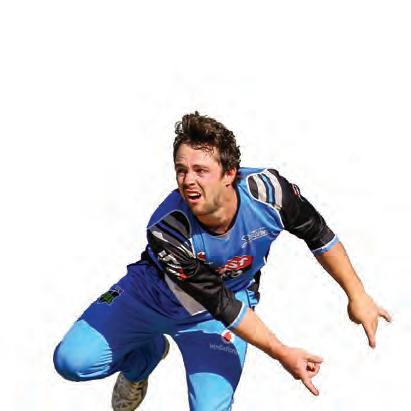




IT IS WITH PLEASURE THAT WE COMMEND TO YOU THE 201718 ANNUAL REPORT FOR CRICKET AUSTRALIA (CA). IT HAS BEEN MORE THAN ONE YEAR SINCE AUSTRALIAN CRICKET UNVEILED ITS NEW FIVE-YEAR STRATEGY. A STRATEGY THAT PLACES MORE EMPHASIS THAN EVER BEFORE ON PARTICIPANTS AND VOLUNTEERS AS WELL AS CRICKET EXPERIENCES FOR FANS.


is fair to say that these events have provided us a valuable opportunity to take stock of the way we are working and identify opportunities to improve. The Board and Executive believe that Australian cricket has already improved and will continue to get better. We are determined to make every moment count.
We have welcomed Justin Langer to the men’s national side as Head Coach. We firmly believe Justin is the right person to lead this team and have huge confidence in what he will
As an international cricketer, Justin was a proud and courageous competitor who gave his all for his country. As a coach he has enjoyed success – not only in overseeing strong teams, but also in developing cricketers who are ready to play international cricket for Australia.
Justin’s work ethic, leadership and values are among his strongest attributes – and he is widely respected across the global cricket community.
Additionally, we’d like to express our gratitude to Darren Lehmann for his contribution as Head Coach. While I know he personally was disappointed to stand down after a poor South Africa tour, he should be very proud of his team’s many achievements during his time as Head Coach with Ashes and World Cup victories


A record breaking 1,558,821 Australians actively engaged in cricket competitions or programs this year – an increase of nine per cent from the previous year. This includes 854,951 participants in cricket programs in schools and 703,870 players in regular competitions or club-based programs at junior and senior level.
We are pleased that more children are experiencing cricket through programs specifically designed for schools. These entry level numbers are outstanding, and we hope the programs help instil a love of the game that will see them continue to play and enjoy their cricket.
This said, our club heartland participation has stayed static, which reinforces the importance of our recent funding commitment to grassroots cricket. In partnership with State and Territory Associations, we recently announced $35 million to be invested over the next three years to significantly grow and support community cricket.
The participation growth is a fitting reflection of the hard work put in by so many around the nation. Our clubs, associations and schools, our dedicated volunteers, coaches and umpires all make an invaluable contribution to ensure quality experiences for those who pick up a bat and ball
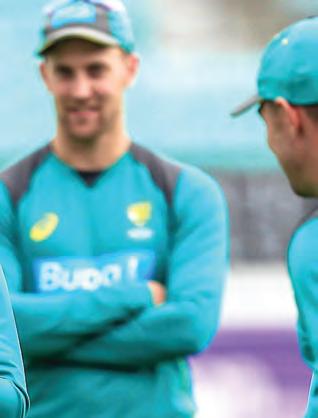
It is important here we acknowledge Nestle, and specifically MILO, who had been a long-time supporter of grassroots cricket. Our partnership ended with MILO at the end of the financial year, and we are fortunate to welcome Woolworths as Naming Rights partner to a revamped Cricket Blast program.
new markets and new stadiums. Rebel Women’s Big Bash League (WBBL) continues to raise the bar as arguably the highest profile women’s domestic league in Australia with attendances 18 per cent higher than last year. While the KFC BBL continued its success with 1,143,763 fans attending the expanded season.
Overall, more than 2.3 million people attended cricket during the 2017-18 summer, beating the previous record, of 1.8 million set last season. This included more than 180,000 people attending women’s elite cricket throughout the season.
Cricket dominated the summer from a TV broadcast perspective, thanks to local and international broadcasters. Add to that viewership via the Cricket Network, and the 2017-18 season was viewed by more people globally than in any previous year.
The outcome of the new Memorandum of Understanding with the players reflected a sensible compromise. Our male players continue to be the best paid athletes in the country and most importantly, our women are now included in the same agreement. Their income has more than doubled, on the back of the ground-breaking gender equity pay model of the MOU, and continues the long-standing record of cricket leading the way in the remuneration of female athletes.

Cricket now offers the opportunity for a full-time, professional sporting career for players, regardless of gender, at both the domestic and international level. This is a fantastic achievement, and everyone involved should be congratulated.
In addition, we are proud to have almost doubled our investment in professional development and wellbeing programs to support players as they progress through their playing careers and prepare for life after professional sport. Helping players navigate the highs and lows of being professional athletes is an important aspect of our partnership with the Australian Cricketers’ Association.
2018 is also significant for CA and the history of our game. Starting with the 2018 Aboriginal XI Men’s and Women’s teams touring England to trace the steps taken by those inspiring cricketers 150 years earlier. We have been commemorating this historical anniversary with numerous initiatives to build Australia’s awareness of these 1868 pioneers and ensure their legacy for years to come.
As you will see in the financial report, we have recorded an operating surplus of $8.3 million, compared with an operating deficit of $50.8 million last financial year. This result is in line with management and budgetary expectations and our four-year, Long Range Plan. It is well known that we budget over a four-year cycle to smooth out the annual fluctuations that occur with our international media-rights revenues.
This year we welcomed the return of FOX SPORTS as a broadcast partner as well as Seven West Media joining the team as cricket’s free-to-air partner, following an extensive domestic broadcast rights negotiation. This has resulted in a new agreement with both broadcasters, valued at $1.182 billion over a six-year period.
Similarly, we signed new radio agreements with ABC, Macquarie Radio and Crocmedia. Radio has long been an important part of how people enjoy cricket in Australia over the summer, and the breadth and depth of these agreements ensures that people will be able to tune in to the cricket action regardless of where they are.
In addition to continued commitments around the broadcast of women’s international matches and the WBBL, it is pleasing to have secured radio coverage for all WBBL matches, a clear sign of the rapidly growing interest from fans for the competition.
After more than 40 years, our broadcast partnership with Channel Nine has come to an end. Over that period, Nine became almost synonymous with cricket and was renowned for setting new standards in the broadcast production of live sport. It is fair to say that not
one organisation in the history of Australian cricket has done more to promote our sport than Channel Nine.
Our thanks also to Network Ten for their role in taking the BBL to a new level, and for providing a platform to launch and grow the WBBL. As a start-up League, the BBL is a phenomenal success story. Over the past five years Ten has made an extraordinary contribution to the league and its growth in bringing new fans to cricket.
We have nothing but gratitude and respect for Nine and Ten –and sincerely thank them for their contribution to our sport.
We are excited to welcome a number of new partners to the family, including Domain as the Men’s Test Series Naming Rights Partner, Alinta Energy as our Men’s Shirt Partner, Woolworths partnering across the Australian junior cricket pathway, providing support from grassroots to elite levels of the game, and Specsavers as the Official Eyewear and Eye Care Partner. We also re-signed two Naming Rights Partners, both for another three years – KFC for the Big Bash League and Rebel for the Women’s Big Bash League.
Earlier this year the International Cricket Council (ICC), on behalf of its members, released the men’s Future Tours Programme (FTP) 2018-2023. This Programme provides clarity and certainty around bilateral international fixtures for the next five years. We are delighted to see a World Test Championship has been created along with a 13-team men’s ODI league that will act as a qualification pathway for the ICC Cricket World Cup. This is a big step forward for international cricket providing greater structure and context to international competition.
CA is firmly at the centre of the first ever global strategy for cricket, being led by the ICC. Within that strategy is a clear statement of the importance of the primacy of international cricket, particularly Test cricket. We look forward to making a valuable contribution and playing our part to ensure the future of the international game.
Finally, we could never have achieved the level of success we did this season without our players and fans. The continued success and growth of cricket in Australia is a result of the commitment of our players and the passion of our fans, and we are pleased that so many of our at-match initiatives, our close collaboration with our broadcast partners, and our digital innovations have been so well received.

We would also like to acknowledge the team at CA and those within all the State and Territory Associations, for their contribution to the sport over the previous year, particularly through the collaborative effort in delivering on the
Whilst there have been difficult challenges over the last 12 months, key foundations have been laid for the future. Our collective agreement with the players, new domestic broadcast arrangements and a confirmed international playing schedule all provide significant medium-term certainty. All this allows us to tackle our national strategy with even greater vigour as we work together with our members to grow cricket as Australia’s favourite sport, and a sport for all Australians.


David Peever James Sutherland Chair CEO
CA would like to acknowledge the Board for its continued professionalism and support. We thank Dr Bob Every for his service to the game having served as a Cricket Australia Director for two and a half years.
A number of players retired during the past year and we pay tribute to them:
Alex Blackwell: Alex was appointed vice-captain of the national side in 2008, and first captained Australia during the 2009 ICC Women’s World Cup in Sydney. Alex is Australia’s most capped female player, having represented Australia in 250 matches. During her career she compiled 5,250 runs in the Test, Twenty20 and One-Day arenas, becoming just the fourth Australian to pass 5,000 runs in a career that spanned more than 14 years.
John Hastings: John retired from first-class and one-day formats. John represented Australia in one Test, 29 One-Day Internationals and nine T20 internationals.
Ed Cowan: Ed represented Australia in 18 Tests, debuting in the 2011 Boxing Day Test against India and played his last Test during Australia’s 2013 Ashes tour of England.
Doug Bollinger: Doug represented Australia on 60 occasions across all three formats of the game in his international career, between 2009 and 2014. The left-arm fast bowler from New South Wales played 12 Test matches, 39 One-Day Internationals and nine T20 Internationals.
Each will be honoured at a match during the coming season.
As many know we have appointed a new Chief Executive Officer, Kevin Roberts, after James decided it was time to declare his innings just prior to the end of the financial year. One of the longest serving executives in the sports industry, James has dedicated himself to ensuring he leaves the organisation in better shape than when he started.
David Peever
In addition, long-serving Australian umpire Mick Martell announced his retirement from Cricket Australia’s National Umpire Panel. Hailing from Western Australia, Mick made his List A debut in 2007 and his first-class debut in 200809, the same season he joined the National Umpire Panel. His credentials include eight One-Day International and four T20 International matches, one Test as third Umpire, and appointments at three ICC events, including the 2009 ICC Women’s World Cup.
In June we marked the passing of Florence ‘Flo’ Hilda Ireland, a great servant of Australian and West Australian cricket. Flo made a significant contribution to the women’s game in the post-war era and was a State representative from 1948 to 1952. While playing for Willows Cricket Club, Flo was vice-captain in the first Western Australian team that competed in the All-Australian Women’s Cricket Carnival held in Melbourne in 1948. The then 21-yearold wicket-keeper was then chosen as the only Western Australian representative in the Australian Women’s Cricket Team to tour New Zealand that same year.

Finally, Former Australian captains Ricky Ponting and Karen Rolton, and celebrated batsman Norm O’Neill were inducted into the Australian Cricket Hall of Fame at the 2018 Allan Border Medal in Melbourne and we congratulate them all.
To kick start the first year of the Australian cricket five-year strategy, we defined seven primary objectives and related targets for the FY18 year. These objectives cascaded into department operational plans and personal plans and objectives.
The following pages summarise progress we have made against each of our objectives in what has been a year with highlights and challenges.
Embed One Team as the way Australian cricket operates, with great people, and resources aligned to strategic priorities.
Contribute to the World T20 in 2020 planning to maximise the impact of the event and its ongoing benefits.
Deliver the best summer ever with record attendances and fan engagement.
Win both Ashes and the Women’s World Cup.
Grow participation with an aligned national, state and local focus on transforming junior cricket.
Complete key media rights and commercial asset sales to underpin Australian cricket’s future growth.
Women and girls are at the heart of everything we do to drive diversity and inclusion.

Launched in September 2017, Australian cricket’s five-year strategy represents more than 12 months of inclusive, inspiring and innovative debate by representatives from all levels of cricket. At its heart, this strategy is driven by our love of the game, and our shared belief that cricket plays an important and valuable role in Australian society; that our communities are healthy when cricket is healthy.
SEVEN AND FOX SPORTS SIGNED A SIX-YEAR DEAL THAT INCLUDES AN EXPANDED KFC BBL SEASON AND LANDMARK AGREEMENT FOR WOMEN’S ELITE CRICKET
During the year, CA secured a record-breaking media rights partnership (a 70 per cent increase on the previous deal) that will significantly boost the investment in our game.
The six-year deal sees Fox Sports return as a broadcast partner of Australian cricket with Seven West Media joining the fold as cricket’s Free To Air partner. Fans will be spoilt for choice with more cricket available across broadcast and digital platforms than ever before, including coverage of an expanded KFC BBL, women’s internationals and 23 Rebel WBBL matches. There will also be more exposure for domestic cricket with selected JLT Matches, the Prime Minister’s XI, Governor General’s XI and Sheffield Shield Final available on Fox Sports. In addition, the digital joint venture between CA and Fox Sports will see both having live streaming rights.
We are grateful for the unwavering support of our outgoing partners, the Nine Network and Network Ten. In particular, we acknowledge the significant contribution of the Nine Network which was the Home of Cricket for four decades and shaped and showcased the evolution of our game for so many fans. Over the past five years Network Ten’s coverage of the Big Bash League helped transform the competition and appeal to a new generation of fans.
CRICKET
CA also signed new six-year radio partnerships with the ABC, Macquarie Media Limited (MML) and Crocmedia, commencing from the 2018-19 season. As with the broadcast and digital arrangements, fans will have access to more cricket content and more ways to tune in than ever before.
All matches broadcast as part of the radio rights deal will be available to stream on CA digital platforms as well as the digital platforms of each radio partner.
Internationally, CA struck six-year agreements with new partners Sony Pictures Network (for India and the subcontinent) and beIN Media Group (for Middle East and North Africa) while also renewing its radio rights with BBC for a further five years. Sony replaced Star Sports who has been a long-standing partner of Australian cricket across Asia; CA thanks Star for its support across several decades.
FANS MORE CRICKET THAN EVER BEFORE

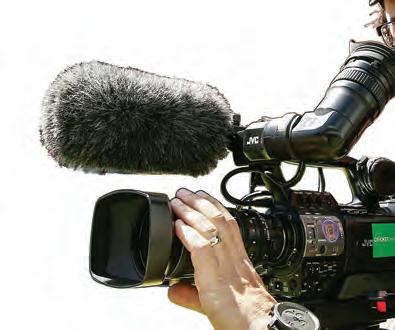

During FY18 the commercial team successfully completed the significant re-organisation of our partnership program, which commenced following a strategic review of the program in 2016. Our key assets were re-configured to introduce a new Principal Team Partner across all formats of men’s international cricket, individual Series Partners and separate International and BBL Naming Rights Partners. This has seen significant revenue growth along with the introduction of a number of exciting new partners, all with strong commitments to leverage their association and amplify the sport within the Australian community.
When our Men’s Test Naming Rights Partner exited unexpectedly in April, Domain jumped at the chance to be CA’s Test Series Naming Rights partner. Domain, Australia’s award-winning property expert, is one of the most digitally-savvy organisations in the country and our aligned audience strategies in mobile and content represent a unique opportunity for both brands. Domain has come on board for the next four years.
A new partnership between CA and Alinta Energy was announced in May: CA’s new Principal Partner of the Australian Men’s Cricket Team and the national digital platform MyCricket, in a four-year agreement that extends from the elite level to grassroots cricket. This deal sees Alinta Energy become the first long-term Principal Partner of the Australian Men’s Cricket Team, with branding rights across the playing shirts of all three formats of men’s international cricket in Australia.
WE HAVE EXPANDED OUR PARTNERSHIP PORTFOLIO DURING FY18 WITH MORE BLUE-CHIP
An exciting new partnership was announced in June, with Woolworths, one of Australia’s most iconic brands. The partnership will see Woolworths sponsor entrylevel programs, school programs, junior cricket formats, regional Talent Academies and male underage teams and championships, as well as becoming the Official Partner of the Men’s International Cricket Team and Series and Official Supplier of the KFC BBL and Rebel WBBL. At the heart of the partnership is a desire by Woolworths to promote the importance of a healthy and active lifestyle to the next generation of Australians through a love of cricket – in September Woolworth’s Cricket Blast was launched in more than 1,000 stores nationwide.
Finally, Fox Sports will complement its broadcast partnership with an all-of-cricket sponsorship to help drive subscriptions, and we secured our first-ever Indian sponsorship with BKT Tires coming onboard as a KFC BBL Supplier. Sanitarium has extended its partnership with CA to beyond 17 years by continuing as a KFC BBL partner with a new Rebel WBBL partnership committing to promotion of men’s and women’s cricket appearing on Weet-Bix packaging for 12 months each year reaching more than 50 per cent of Australian households. We also extended our partnership with Bet365, a very respectful partner in a sensitive category, for another four years.








THE BIG BASH HAS CONTINUED TO BUILD ITS POPULARITY WITH FANS YOUNG AND OLD, THANKS TO A COMBINATION OF FAST-PACED ACTION ON THE FIELD, EXCITING LOCAL AND INTERNATIONAL TALENT, AND A SAFE, FAMILY-FRIENDLY ATMOSPHERE OFF-FIELD.
40,732 fans were at Adelaide Oval to witness the conclusion of another exciting summer of Big Bash entertainment, with the Sydney Sixers and Adelaide Strikers claiming the league title for the Rebel WBBL and KFC BBL respectively.

The popularity of the WBBL continued to grow in its third season, with homegrown talent and international superstars taking part in a high quality and entertaining competition, inspiring a new generation of female cricketers across Australia.
The season began at North Sydney Oval with more than 9,000 fans attending four matches across two days. 151,931 fans turned out to see the world’s best cricketers in action across the season, representing a 25 per cent increase on WBBL|02. The Sydney smash between the Sydney Sixers and Sydney Thunders attracted a season-high attendance of 16,380. WBBL|03 continued its popularity with TV audiences, averaging 223,000 viewers nationally per match.
Globally there were more than 1.8 million live streams and nine million minutes viewed on CA’s live stream, with all non-televised matches appearing live and free on cricket. com.au and the CA Live App. In addition, the WBBL achieved more than three million short form video views across its social media channels globally.

1,143,763 people attended BBL|07, an 8.5 per cent increase on BBL|06, with the expanded competition – 43 matches up from 35 in BBL|06 – enabling more people from across Australia to attend a BBL match than ever before. As well as surpassing the one million attendance record for the third season running, the average match attendance of 26,599 was one of the largest in Australian sport.
Club attendance records were broken including the Brisbane Heat which had a sell-out crowd of 35,564 fans turn out to see the Heat defeat the Perth Scorchers at the Gabba. The Scorchers also broke new ground, with the Club achieving a 19th consecutive sell-out crowd, topped by a record attendance of 52,960 in its Semi Final against the Hobart Hurricanes at Optus Stadium.
BBL|07 was popular once again with TV audiences, averaging 947,000 viewers nationally per match, with a season high peak audience of 1.84 million during the Adelaide Strikers vs Hobart Hurricanes Final at Adelaide Oval. In addition to the Network Ten broadcast, the BBL and WBBL were also broadcast to more than 130 countries globally.
The BBL achieved more than 1.1 million live streams and almost 20 million minutes viewed for the season via the CA Live Pass, while a further 75 million short form video views were achieved across BBL social media channels globally, an 89 per cent increase on the previous year.


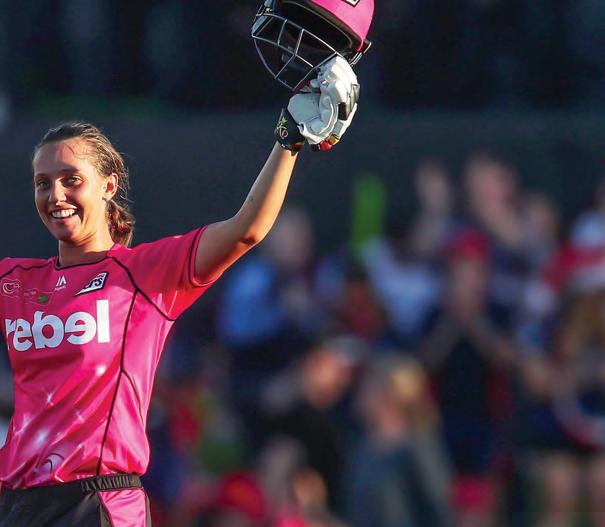
THE BBL AND WBBL PLAYERS CONTINUE TO INSPIRE THE NEXT GENERATION THROUGH ONGOING FAN ENGAGEMENT AND PASSION WITH CAPTIVATING ACTION ON THE FIELD.

As part of an extended season, for the first time, BBL and WBBL matches were played in every State and Territory, with games in new markets; Alice Springs, Canberra, Geelong, Launceston, and the WBBL in Mackay, while also returning to Canberra. In front of a near capacity crowd, the BBL and WBBL double-header at Traeger Park saw the Adelaide Strikers and Perth Scorchers take to the field in specially designed indigenous playing tops to mark the occasion. While in Mackay, WBBL’s Brisbane Heat and Melbourne Stars played in front of full houses across two consecutive nights. The BBL matchup between Sydney Thunder and Melbourne Renegades at Manuka Oval, Canberra was also a highlight, with tickets selling out two months prior to the match.

This regional expansion was driven by our commitment to increase the footprint of the Big Bash and provide access for more fans than ever before. This, along with

Our sport has so much going for it. For fans, it’s not just cricket, it’s how they experience our great game. At match fans usually have great weather, they enjoy the event with friends and or family, and sometimes it’s an all-day experience. So, for fans to enjoy their time at the game even more, we have introduced new ways to enrich the environment, the food, the way they socialise, and to provide more ways for fans to get involved. We want to give memorable experiences to existing fans while attracting new ones, to help make cricket Australia’s favourite sport and a sport for all Australians.

HERE ARE SOME OF THE WAYS WE ENHANCED FANS’ CRICKET EXPERIENCE LAST SUMMER.

Melbourne hosted a new social entertainment experience, The Lawn, located across Bays 11 to 13 of the MCG during the ODI between Australia v England in January.
The Lawn was a relaxed and inviting space that offered various complimentary gourmet food options and quality Australian wines and beers. Comfortable seating options that ranged from sun beds and couches to tables and chairs allowed fans to socialise with friends while still enjoying a great view of the on-field action. Sun visors and ice creams were handed out, and fans could use great props for fun photo opportunities and an Instagram filter. Large umbrellas protected fans from the sun during the day, and blankets were brought out for those starting to feel the cold as the sun set. The relaxed party atmosphere was perfect for a beautiful summer’s day at the cricket.
58 per cent of the audience were female; 20 per cent had never been to the cricket before; and, 88 per cent said they would like to attend the cricket again as a result of their experience. The Lawn activation is a credible platform from which to leverage cricket and our match day experience for a non-traditional audience.
Introduced in January 2016 specifically to address a need identified for our South East Asian fans – and continues to be enjoyed by cricket fans of all communities – the Field of Flavours has come to be recognised as a feature of our One Day International matches in Melbourne and Sydney appealing to both cricket fans and event goers. With One Day International action on the big screen, the smells and sounds of night food markets and live music from local artists, the Field of Flavours had fans in cricket and culinary heaven. Located outside Gate A at the SCG and in Yarra Park outside the MCG, the Field of Flavours was a welcome favourite for cricket fans again in January 2018.


We aimed to create a village like atmosphere for cricket fans to come and enjoy kids activities, giveaways, and a welcoming environment for fans of all ages, men and women.
This is about bringing together a community to enjoy an afternoon of compelling cricket in an environment that is buzzing with fun and activity.


Every cricket fan’s dream of cooling off in the pool and simultaneously having a front-row seat to an enthralling cricket match has come true. We brought the quintessential Aussie in a first for Australian sport. The Pool Deck has been hugely popular since its inception in 2016. It is a six-by-eight-metre tiered pool with two large tiered decks with lounges, seating, tables and shade, which can cater for more than 140 people at any one time.
Crowds at the Men’s Ashes Series, the One Day International, and the KFC BBL season had the chance to cool off and enjoy a unique cricket-watching experience on the Pool Deck at the Gabba. To be in with a chance for an at-match upgrade to the pool, fans needed to come to the match in their best pool attire and share a photo to social media using the hashtag #cricketpooldeck.

In November 2017, CA released its first documentary, Forged in Fire¸ which chronicled key moments and memories from one of sport’s greatest rivalries, The Ashes. The documentary series premiered on the Nine Network across three nights, with each of the three episodes being among the highest rating programs of that day.
The film series took viewers behind the scenes of some of the most famous moments in Ashes history with insights from some of the biggest names in the game. It brought together the key protagonists from the last 50 years of sport’s greatest rivalry, as well as what drives both nations’ quest to capture cricket’s most prized possession; the Ashes urn.



CA gathered 11 of Australia’s most inspiring women to feature in a video, along with members of the Australian Women’s Cricket Team, to encourage a wave of support for the squad prior to the Commonwealth Bank Women’s Ashes series against England, under the banner of our #BeatEngland campaign. The 11 incredible women from across Australian society have all achieved greatness in their chosen fields, overcoming barriers that have shaped, but not defined, their experiences.

In a spectacular celebration of Australia securing both the women’s and men’s Ashes this summer, as well as the incredible support shown by cricket fans across the country, CA lit up the sails of the Sydney Opera House in a dazzling display. The world-famous landmark was bathed in green and gold, with both the Ashes urn and the Women’s Ashes trophy taking centre stage, following Australia’s Test win to wrap up the Men’s Ashes Series at the Sydney Cricket Ground.


CA Digital’s suite of products continued to go from strength to strength domestically and in the international market, as we put our fans, and what they want, at the heart of every piece of product development and content selection.
Our Cricket Network – led by cricket.com.au and the CA Live app – is where fans access the live streaming of every game, radio commentary, extensive highlights, live scores, behind-the-scenes video content from within the men’s and women’s Australian Cricket Teams, and all the news and features from the game around the globe.
Compelling content, from the on-field activities of the elite men’s and women’s teams to the in-depth features that reveal the true characters, is the lifeblood of the Cricket Network, which has seen it reinforce its position as Australia’s No.1 sports platform in summer, and average a unique audience of 2.6 million between November and January, peaking at 2.94 million in December.

CRICKET NETWORKCA LIVE APP
The CA Live app is Australia’s No.1 mobile destination for everything cricket. Its userbase has continued to grow, with a 19 per cent increase on last year to now have more than 1.2 million Australians using it in summer.
Paying subscribers for CA’s Live Pass increased significantly, while live streaming consumption soared, with minutes viewed increasing by more than 115 per cent to 133 million.

PEAK AUDIENCE IN DECEMBER 2.94M
N0.1 MOBILE APP FOR EVERYTHING CRICKET
1.2M AUSTRALIANS USING THE APP THIS SUMMER

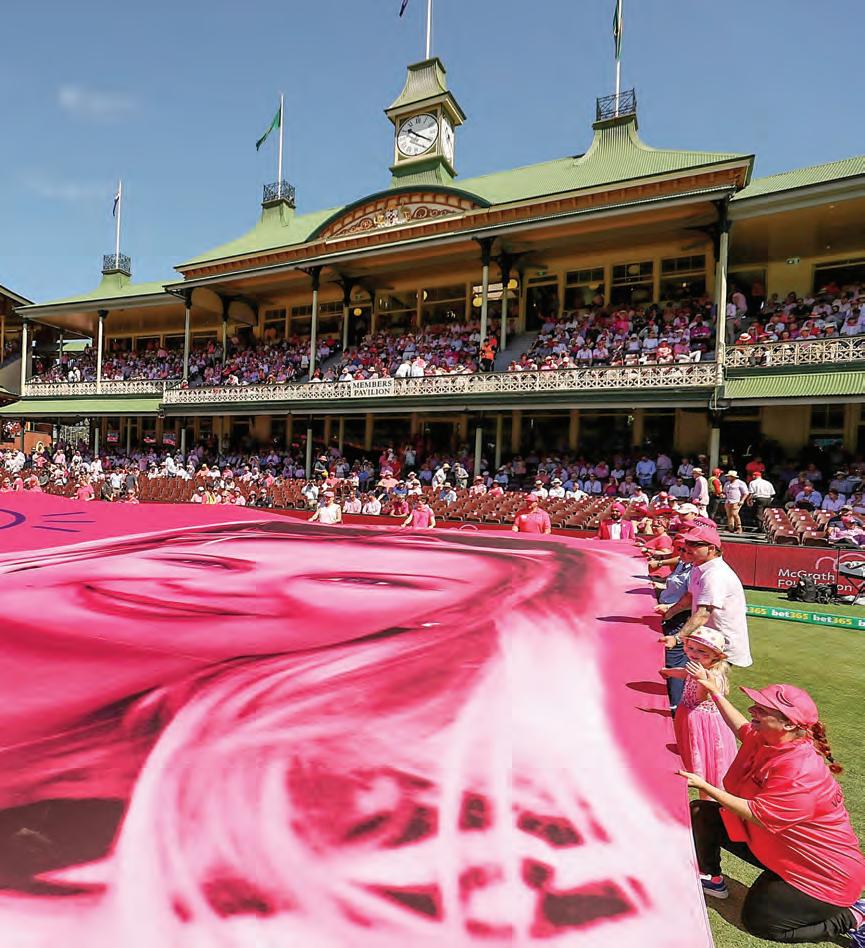
The partnership between CA and the McGrath Foundation is one of the most successful and recognisable sport and charity partnerships in the world.
CA and the cricket community helped The McGrath Foundation reach the fundraising target set for the tenth year of the Men’s Ashes Sydney Pink Test, raising more than $1.3 million following fundraising efforts at the SCG and throughout Australia. The funds raised in Sydney were the largest in the history of the Pink Test and allowed the Foundation to fund 10 McGrath Breast Care Nurses for a year and support 1,000 families through breast cancer. This is the second year in a row of record donations.
The McGrath Foundation brings a level of engagement to Day Three of the Test match that is unique. The Pink Test is a destination Test match because of the association with the McGrath Foundation, and the SCG attracts a crowd that is bigger or equal to Days One and Two. We are extremely proud cricket plays such a significant role in a cause that supports so many Australians and their families.
TOTAL AMOUNT DONATED IN FY18 TO COMMUNITY PARTNERS BY CA AND THE CRICKET COMMUNITY: $1,654,559
$240,705
ALANNAH AND MADELINE FOUNDATION $49,237
Last season, CA introduced a gold coin donation for Day Five of Test matches, with proceeds of all public gate entry going to assorted charities. We are now attracting bigger crowds for the Gold Coin donation day than we were when entry was free.
Fans are able to donate a gold coin to a worthy cause, enjoy a day of cricket at the ground, and cricketers get to play in front of larger crowds.
$83,139 was raised for charity throughout the Men’s Ashes Series from day five donations, which also benefited CA’s other charity and community partners Movember, the Alannah & Madeline Foundation and the Lord’s Taverners’ Sporting Chance Fund.
THE CRICKET CARES PROGRAM USES CRICKET AS AN AGENT OF CHANGE IN THE COMMUNITY – AUSTRALIAN CRICKET SQUADS UNDERTAKE COMMUNITY ACTIVITIES DURING EACH OF THEIR OVERSEAS TOURS.
The Australia Women’s Under 19s Team visited Sacred Heart College in the centre of Johannesburg. Half the students in this Catholic private school live in poverty.

In March, Australian cricketers visited a women’s support centre in Vadodara, that provides security, counselling, guidance and information to support women in distress who are victims of domestic violence.
Players took time out from the Commonwealth Bank tour of India to meet with and hear from survivors of domestic violence about the extreme challenges they have faced, and the crucial role the support centre has played in their ongoing emotional recovery. Several centres have been set up around the Gujarat region of India with all attached to police stations to add an additional safety network. The visit was arranged in partnership with Oxfam Australia.


In August, Australian cricketers met with families from Satolla Slum in Dhaka, Bangladesh, where they learned about the living conditions of residents and met domestic workers who are part of Oxfam’s Urban Resilience Program.
Ahead of the first Test of the Qantas Tour of Bangladesh, players took time out to hear from Dhaka locals about their struggles to access decent work, as well as clean drinking water, toilets, adequate drainage and bathing facilities, and to see first hand how Oxfam in Bangladesh is working to counter these issues.


In February, Australian cricketers visited the Charlotte Maxeke Johannesburg Academic Hospital which partners with the Smile Foundation in Johannesburg. The Smile Foundation is a non-government organisation dedicated to transforming the lives of children with facial conditions. The Foundation works together with South Africa’s Academic Hospitals to put the smile back onto children’s faces with corrective facial reconstructive surgery and treatments.
Players took time out from their preparations for the first Test of the Qantas Tour of South Africa, to learn about the Foundation’s work and spend time with 35 children currently based on the ward awaiting surgery.
AUSTRALIANS WILL HAVE THE CHANCE TO SEE THE MOST TALENTED PLAYERS IN THE WORLD.
The eyes of the world will be on Australia in 2020 when the country hosts the ICC World T20 women’s and men’s tournaments for the first time.
T20 has come a long way since the first men’s T20 International was played between Australia and New Zealand in 2005. The standalone tournaments in 2020 will be truly global showpiece events in cricket’s fastest growing format of the game, with broad national footprints so as many fans as possible can see the world’s best players compete to be crowned world champions.
10 teams will contest the women’s event from 21 February to 8 March 2020, and 16 teams will compete in the men’s tournament from 18 October to 15 November 2020. Both finals will receive equal billing, and will be played at the country’s biggest stadium, the Melbourne Cricket Ground. This presents an opportunity to set a new world record for the highest attendance at a women’s sporting event, with the final to be played on International Women’s Day.
During FY18, the exceptional support provided by Governments at Federal, and State and Territory level, as well as host cities, venues and State and Territory Cricket Associations, was critical in setting up the foundations for a hugely successful event.
In January an intensive host city and venue selection process concluded with a major announcement at various locations around the country. This included tournament dates and competition structure, comprising 23 women’s and 45 men’s matches.
Also significant was the establishment of a Local Organising Committee, to administer both events. By July 2018, the full senior leadership team had commenced, and has been working with stakeholders from the ICC, Australian Cricket, Host Cities and their venues, to plan and coordinate all aspects of the tournaments including marketing and communications, ticketing, logistics, cricket operations, community engagement, volunteering and security.

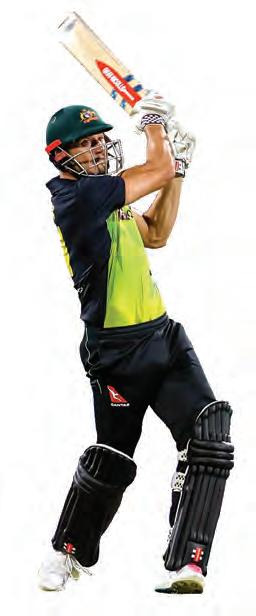

Junction
Super
Adelaide Oval, Adelaide MCG, Melbourne
Perth Stadium, Perth
SCG, Sydney
GABBA, Brisbane (4 matches)
Bellerive Oval, Hobart (2 matches) Preparation
Allan Border Field, Brisbane
Group Stage
Bellerive Oval, Hobart
Kardinia Park Stadium, Geelong




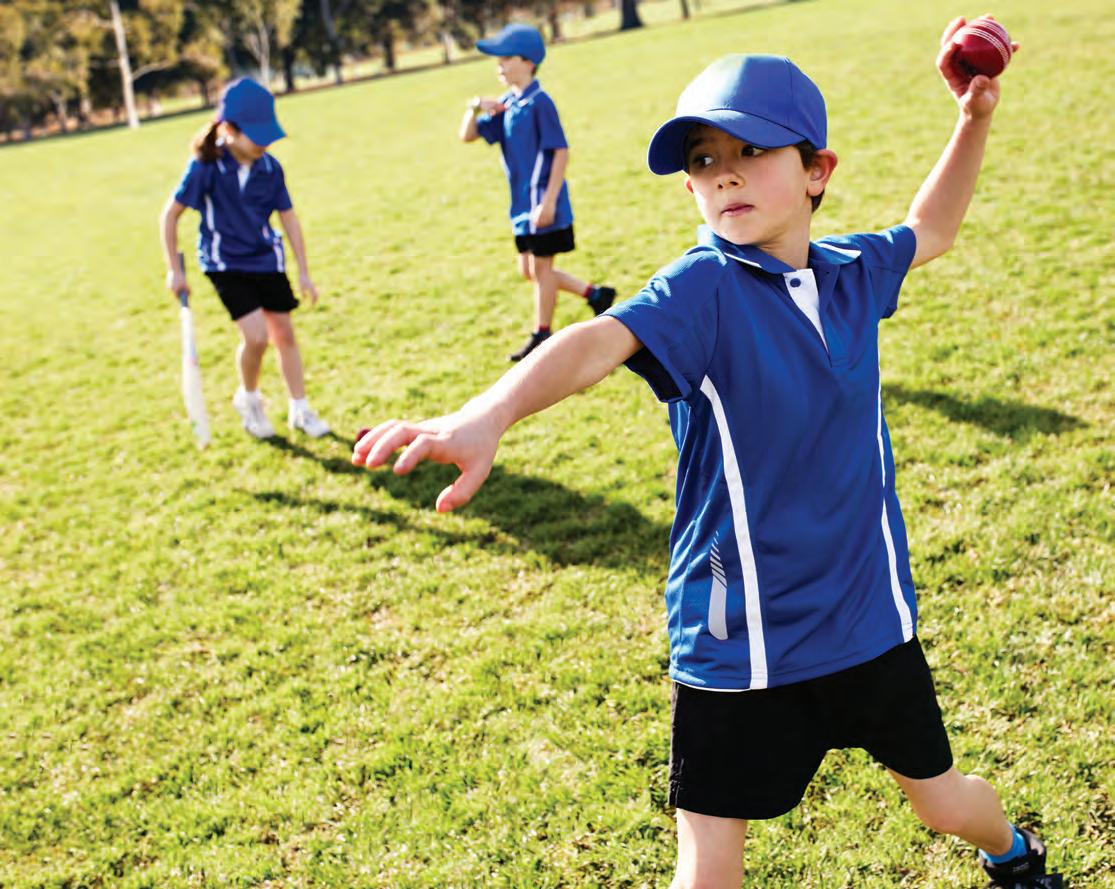



703,870
PLAYERS ENGAGING IN CRICKET COMPETITIONS OR CLUB-BASED PROGRAMS AT JUNIOR AND SENIOR LEVEL:
TOTAL PARTICIPANTS
1,558,821
+9%
432,609 CLUB PLAYERS 89,777 SCHOOL COMP PLAYERS 181,484 INDOOR PLAYERS
TOTAL SCHOOLS PROGRAM PARTICIPANTS
MORE THAN 850,000

34,380 UMPIRES 3,577 ACCREDITED VOLUNTEERS
+24% COACHES
SIX IN TEN NEW PARTICIPANTS TO THE GAME IN 2017-18 WERE FEMALE
30% PARTICIPANTS ARE WOMEN AND GIRLS
619 NEW GIRLS’ TEAMS
MULTICULTURAL PARTICIPATION 17% OF ALL PARTICIPANTS
3,547 CRICKET CLUBS AND 437 ASSOCIATIONS ALL-ABILITY PARTICIPATION
25,846 MULTICULTURAL PARTICIPATION 268,596 +20% INDIGENOUS PARTICIPATION 64,921 +19%
Our clubs, associations and schools, our dedicated volunteers, coaches and umpires all make an invaluable contribution to ensure the quality of the experience for those that pick up a bat and ball each season.
James Sutherland

WOOLWORTHS CRICKET BLAST
JUNIOR BLASTERS 5-7 year-olds
MASTER BLASTERS 7-10 year-olds
CREATING THE BEST PARTICIPATION EXPERIENCES TO GROW JUNIOR CRICKET
CA revamped its Entry Level Programs during 2017-18, with Woolworths Cricket Blast launched in October 2018. Participants in the Junior Blasters program learn the skills of cricket through fun, game-based activities, whereas those in the Master Blasters program get the chance to play games of cricket as part of a team.
The successful junior participation partnership between CA and MILO came to an end after the 2017-18 cricket season. Over the course of a 25-year partnership, junior participation in cricket expanded considerably and we are very grateful for the support MILO provided to grassroots cricket. In June 2018, CA announced its new partnership with Woolworths, who in addition to securing the naming rights of Woolworths Cricket Blast in clubs and schools, will also be Presenting Partner of the Mascot Challenge, which is a school program for Kindergarten/Prep to Year 2 students, Junior cricket formats, regional Talent Academies and male underage teams and championships.

STAGE 1 (U/11)
STAGE 2 (U/13)
STAGE 3 (U/18)
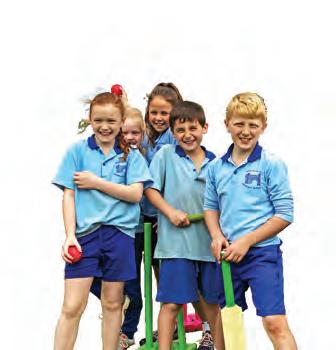
MASCOT CHALLENGE
WOOLWORTHS CRICKET BLAST
• HEALTH/PE SESSIONS
• SCHOOL CUPS
On the back of a successful pilot in season 2016-17, CA and the State and Territory Associations worked with local junior cricket associations to rollout the Australian Cricket Junior Formats Program nationwide in 2017-18.
This first season has been successful with 63 per cent of junior associations (160) adopting the Program, with 4,612 teams adopting the new formats. The results on the ground included a 27 per cent increase in boundaries hit; a 19 per cent increase of runs scored off the bat; a 13 per cent increase of wickets taken per over, and; a 19 per cent decrease in wides and no balls.
We plan to continue to roll out these new formats in 2018-19, with all Associations adopting stage one in the 2019-20 season.
More than 850,000 young Australians participated in our programs specifically designed for schools in 2017-18. These programs are designed using the learn through play approach to skill development. Kids learn, improve and refine their skills through fun and modified activities and games.
Adopting an idea from Cricket Tasmania, CA introduced the Mascot Challenge across Australia this year. The program, run by teachers in the classroom, is designed to develop fundamental movement skills in kids from Kindergarten to Year 2. It is supported with Big Bash mascot promotional material and kids receive giveaways.
CREATING OPPORTUNITIES FOR ALL GIRLS TO PLAY THE GAME AND EMULATE THEIR HEROES LIKE MEG LANNING AND ELLYSE PERRY.
Being a leading sport for women and girls is a key focus of Australian cricket’s five-year strategy. The Growing Cricket for Girls Fund plays an important role in cultivating sustainable female participation in our sport.
2017-18 was the second year of the Fund, that will see $6 million invested in growing cricket for girls over a fouryear period, specifically targeting girls aged 11-17. This is the single longest investment by an Australian national sporting organisation into teenage girls’ sport.
Girls’ connection to cricket starts in Kindergarten/Prep and goes all the way through to the elite levels our sport. Starting by providing fun ways for girls to learn the skills and play cricket with their friends, they can now move through junior cricket levels (in mixed or all girls’ teams) and into the state and national competitions where pay equity provides for those who wish to play cricket professionally.
INSPIRING GIRLS TO MAKE CRICKET THEIR FAVOURITE SPORT – CONNECTING WITH THEIR HEROES.
The more girls see successful female cricketers, the more likely they are to believe they too can play and excel at our sport. To help female junior cricketers connect with their heroes, we ran numerous initiatives last year. For example:


We invited young female cricketers to be involved in a ‘priceless’ experiences during the Commonwealth Bank Women’s Ashes Series, where they ran onto the field to receive a signed cap from the Australian team or the English team.
The Rebel WBBL has been instrumental in attracting more girls to the game and demonstrating the pathway that’s now afforded to young girls. State Associations arranged for young female cricketers to attend Rebel WBBL matches on the opening weekend to watch their heroes in action.

Now in its second year, the National Cricket Inclusion Championships (NCIC) provides cricketers with a disability the opportunity to play our game and be recognised for their skill and ability.
The people of Geelong in Victoria welcomed more than 200 cricketers from six states who came together to compete at the NCIC between January 21 and 27 this year.
All three division finals were live streamed and had a reach of more than one million people, a first for disability cricket in Australia.
2017-18 marked a significant milestone regarding CA’s investment in disability cricket. With the support of the Commonwealth Bank, CA became the first nonParalympic Australian sport to fully fund national disability teams. This means cricketers with a disability representing Australia will no longer have to self-fund their own participation in international series.
We thank our generous sponsors, the Commonwealth Bank for its continued support via our A Sport for All Program and Lord’s Taverners Australia who also contributed to the NCIC this year.

SA DEFEATED VIC IN THE DEAF AND HARD OF HEARING DIVISION
South Australia Deaf and Hard of Hearing completed a remarkable turnaround from its previous encounter with Victoria when it was dismissed for just 34, to put in a great performance and win by six wickets with 10 balls to spare.



SA DEFEATED QLD IN THE DIVISION FOR CRICKETERS WITH AN INTELLECTUAL DISABILITY
Queensland were bowled out for 98 on the second last ball of their innings chasing SA’s 3/122, resulting in South Australia’s first ever NCIC Intellectual Disability Title.

NSW DEFEATED VIC IN THE BLIND AND LOW VISION DIVISION
New South Wales claimed the Blind and Low Vision title after a hard fought three run victory over Victoria. New South Wales was undefeated throughout the competition.

Beyond grassroots participation, the National Indigenous Cricket Championships (NICC) is about creating pathways for Indigenous Australians to follow: Pathways that ultimately lead to even more Indigenous Australians pulling on our national colours.
For the second consecutive year, Indigenous players had a huge impact in the KFC BBL and the Rebel WBBL, with seven players contracted for the 2017-18 season. Ash Gardner and D’Arcy Short both recorded the highest ever scores in their respective competitions. There were another six Indigenous players contracted to State Associations.
Government for its record investment, the Commonwealth Bank, along with NT Cricket and the Alice Springs Town Council for their generous and ongoing support of this national carnival of Indigenous cricket.





AUSTRALIAN CRICKET WILL INVEST $300 MILLION INTO COMMUNITY CRICKET ACROSS THE LIFE OF OUR FIVE-YEAR STRATEGY. THIS INCLUDES THE EXPECTED INVESTMENT FROM BOTH CA AND THE PLAYERS VIA THE GRASSROOTS FUND THAT WAS ESTABLISHED UNDER THE MOU –DESIGNED TO REINVEST INTO THE COMMUNITIES THAT UNDERPIN OUR GAME.
A team of 130 people spent 12 months visiting more than 5,500 cricket facilities around the nation, which included more than 7,100 ovals, and working with 440 local councils. Facilities at government and independent schools, and indoor cricket centres were included in the audit. Cricket is the first national sport to undertake a widespread national audit of all our facilities.
Informed by the key findings of the National Facilities Audit, Australian cricket contributed $1.28 million to the National Community Facilities Funding Scheme in 2017-18, which supported nearly 100 projects worth $19.48 million across the nation to benefit grassroots clubs and community cricket. This Scheme has transitioned into the new Australian Cricket Infrastructure Fund, with Australian cricket to invest more than $14 million over the next three years. It is projected that governments, local councils and private partners will collectively invest more than $70 million a year over the three years to fund around 270 projects.

This partnership is made possible because governments, like cricket, are focused on community participation in sport irrespective of gender, ability, background, location and age. Cricket will continue to build this relationship with governments and other stakeholders to grow our sport.

In line with Australian cricket’s five-year strategy, a national strategic framework is being developed to provide a clear and coordinated approach to cricket infrastructure planning and provision. The framework is being implemented through state-specific infrastructure strategies, the first being released in Victoria in May 2018.
The framework incorporates facilities for the elite level (such as the new Victorian Cricket and Community Centre at Junction Oval), as well as regional and community facilities.
For cricket to be a sport for all Australians, we need to provide infrastructure and facilities that make everyone welcome. Our facilities audit found that around 80 per cent of our changeroom facilities are unable to meet the needs of female participants.
OVER THE LAST YEAR, SIGNIFICANT CRICKET INFRASTRUCTURE HAVE BEEN OPENED IN VICTORIA, WESTERN AUSTRALIA, SOUTH AUSTRALIA AND THE ACT.
CA worked closely with the Western Australian Cricket Association and the WA Government, which invested $1.6 billion to create a new world-class stadium in Perth. Cricket was honoured to host the first ever sporting event at the new stadium, a Gillette One-Day International between Australia and England in January 2018, which at the time set a new crowd record for any sporting event in Western Australia (53,871).
In partnership with CA, Cricket Victoria opened the new Victorian Cricket and Community Centre at Junction Oval in March 2018. This was made possible by $25 million from the Victorian Government towards a $40 million project. The Centre provides a standalone all year-round home for all levels of Victorian cricket, and also houses the administrative headquarters for Cricket Victoria, Melbourne Stars and Melbourne Renegades. The Centre will host matches in the ICC Women’s World T20 in 2020.
Cricket’s newest first-class venue in Adelaide was opened
its first International fixture this summer. Named after Australian cricket legend Karen Rolton, the $10.3 million project was led by the South Australian Cricket Association with additional funding support provided by CA.
Cricket ACT’s new home at Phillip Oval was opened in November 2017 with more than $6 million invested by the ACT government, which also included financial support from CA, Cricket NSW and Cricket ACT. The upgrade provided a new administration headquarters for Cricket ACT, and indoor and outdoor training and playing facilities. It is also a facility for the whole community, including Premier Cricket through to pathway and junior cricket development programs.
Key works have also been undertaken at Metricon Stadium on the Gold Coast, and the venue will host its first ever KFC T20 International next month. This project has been a partnership between the Queensland Government, Gold Coast City Council, Gold Coast SUNS, Queensland Cricket and CA.
CA is also continuing to advance discussions with all levels of government to develop the National Cricket Campus in Brisbane, with Australian cricket having committed $4.25 million to the $18 million project.

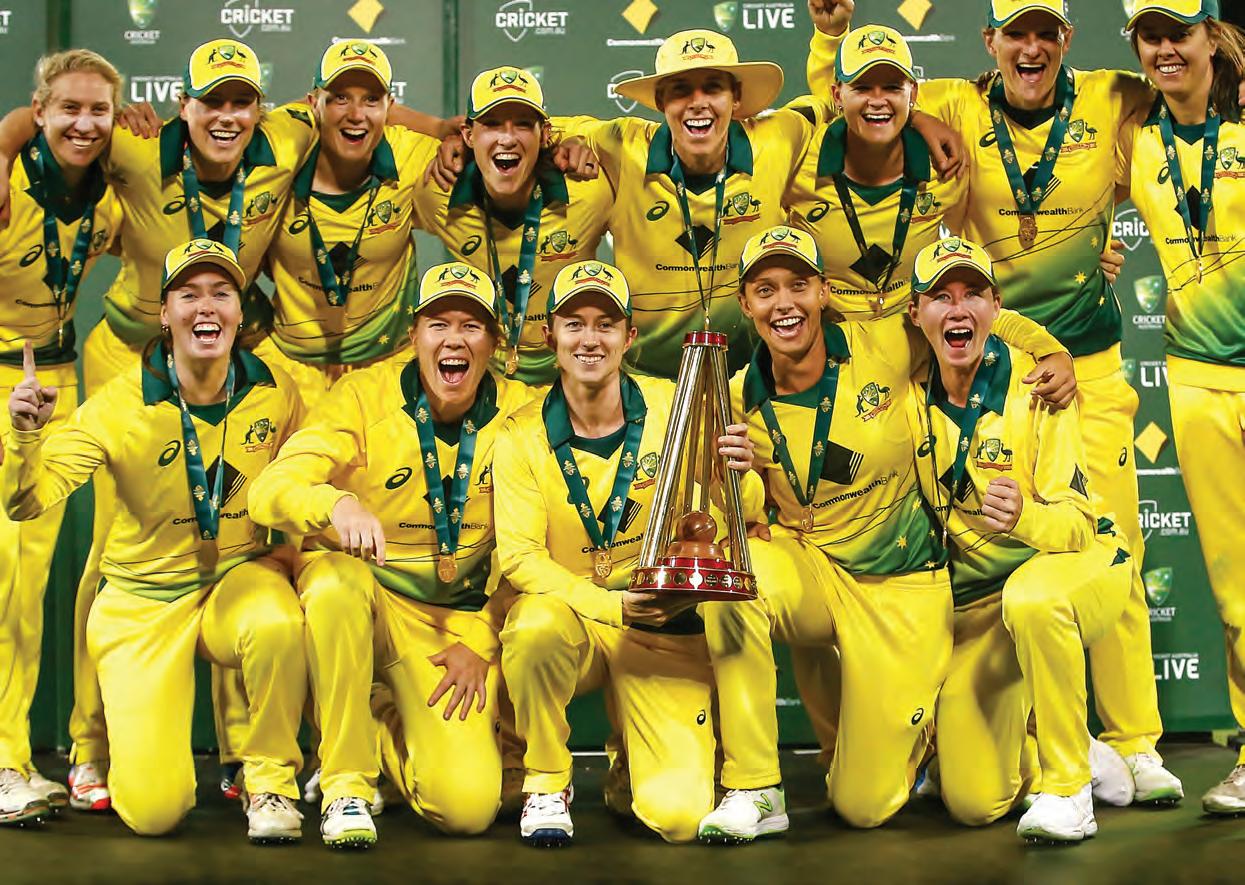

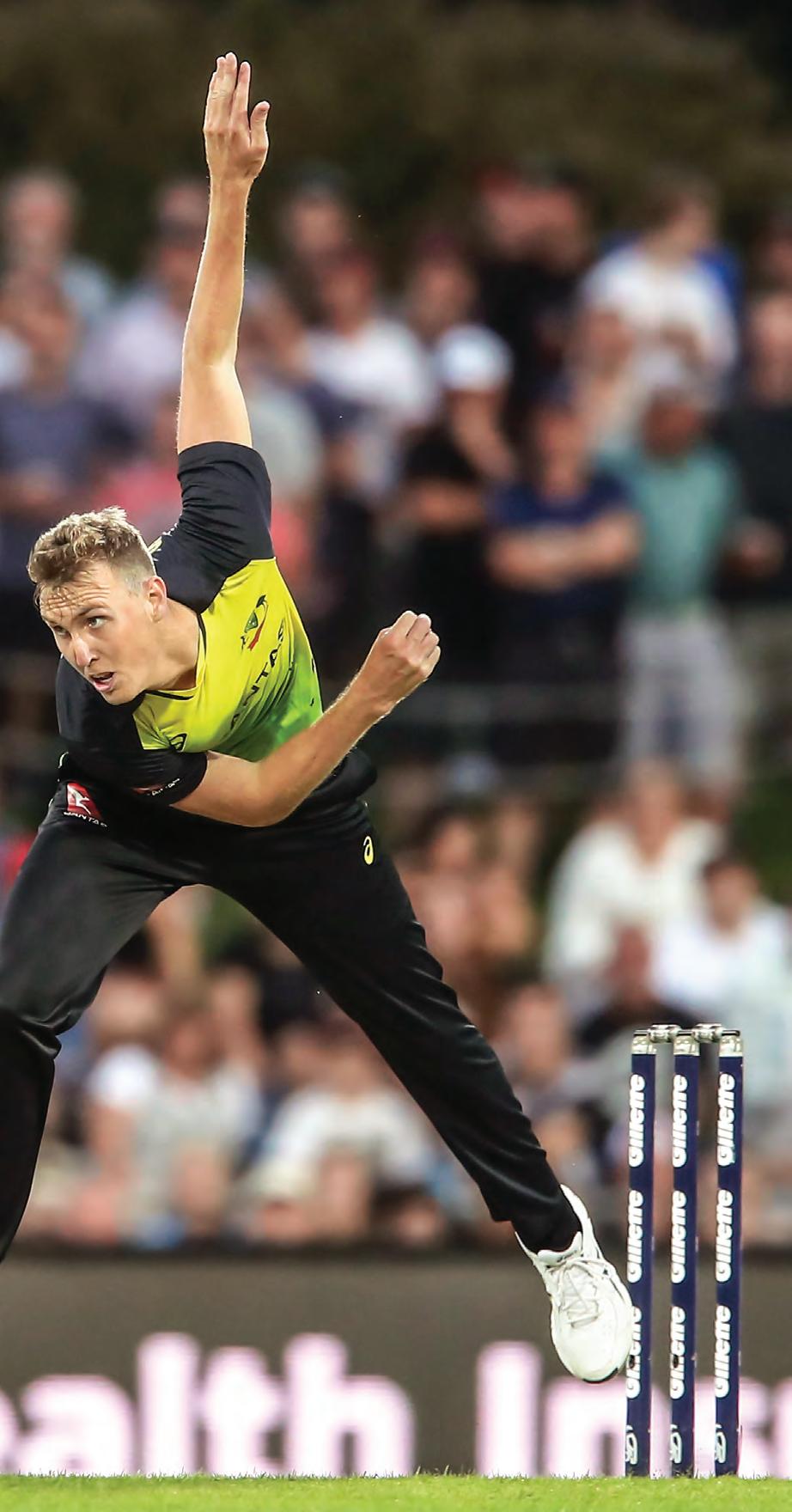
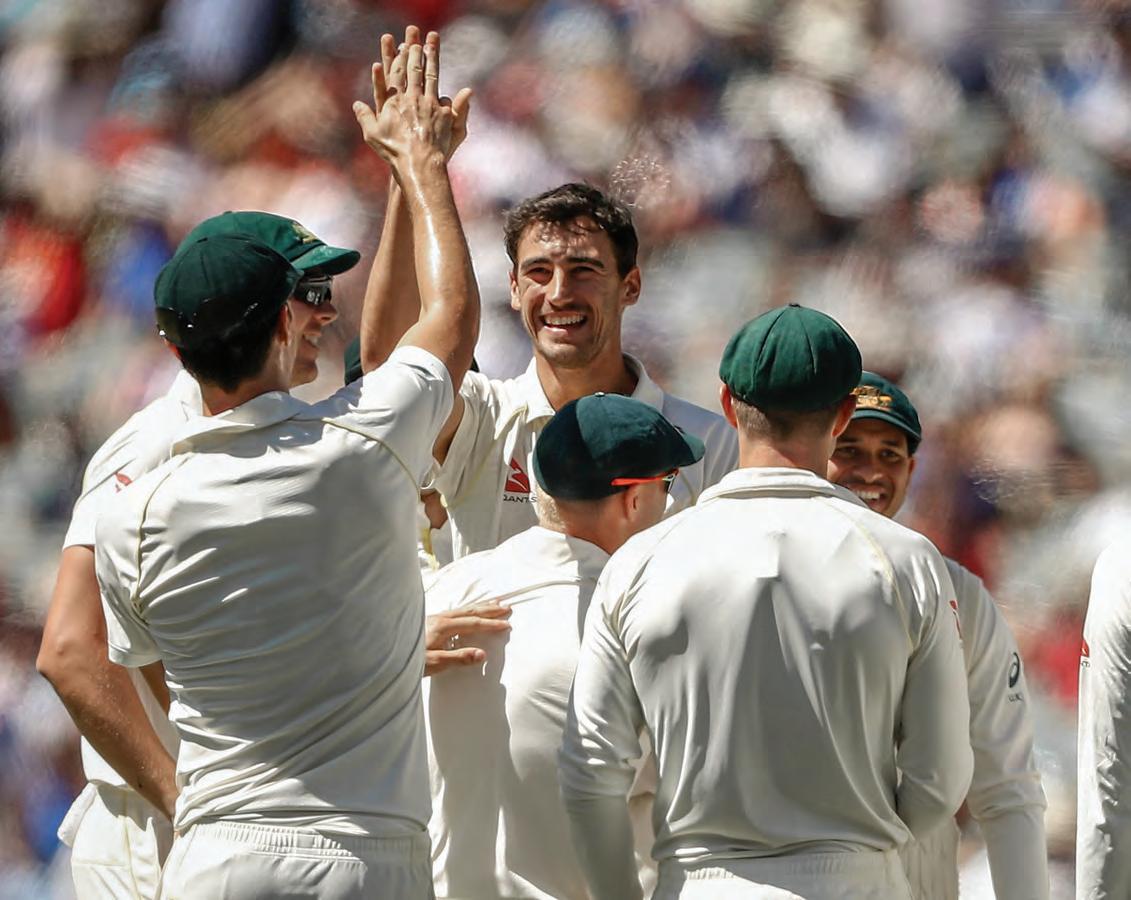
Warning: the following story contains images of deceased people

At the start of year, the men’s team focus was to win The Ashes and improve our world ranking ahead of the World T20 in 2020. We achieved these goals by securing The Ashes and improving our ICC ranking from seventh to second after the Gillette (T20I) Tri-series.

The England Men’s Team brought The Ashes to our shores in November, having won in 2015. Australia won the Test series 4–0, which means Australia has not lost an Ashes Test in either of the past two home Ashes series. In the last 12 months Australia won the third most Tests. It is also the first time any country has held both Men’s and Women’s Ashes since 2013-14.
We have proudly won four of the past five World Cups, however we were disappointed to lose the Gillette ODI series to England 4-1, post the Ashes. The Series attracted 180,161 fans to the five games, a 15 per cent increase on the corresponding series in 2014.
Australia played against England and New Zealand (NZ) in this Tri-series, hosted by Australia and NZ, where we won five from five, defeating NZ in the final. The team set a world record in the fourth match, for the highest successful run chase in T20 cricket history, 5-245 at Eden Park, Auckland.

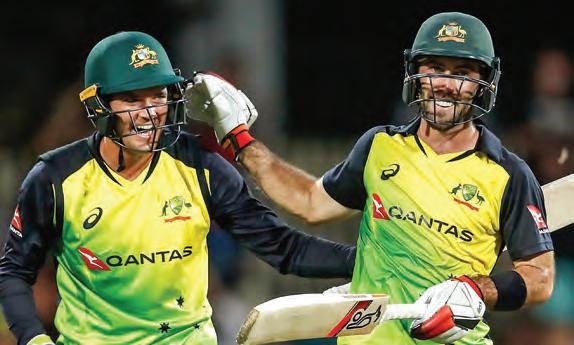
In September, Australia tied its two-Test series against Bangladesh 1-1. Australia then travelled to India for three T20Is, tying the series at 1-1, and then an ODI series that India won 4-1. In March, the team travelled to Cape Town, where South Africa won the Test series 3-1. And finally, England won all six matches (five ODIs and one T20I match) in June 2018.
1,125,163 people attended The Ashes Series and Gillette One-Day International Series, as well as the Gillette T20I TriSeries. The Ashes on its own attracted 866,732 fans, making it the second most-attended Test series on Australian soil. Highlights included the 199,147 fans at the Day-Night Test, the most attended match ever at Adelaide Oval, the 262,616 people at the MCG, the second largest crowd for a Boxing Day Test, and the sold-out crowd of 53,781 that attended the Perth ODI. Strong TV ratings spanned the men’s international series, with an average of 1,291,128 million watching the Test, ODI, and T20I matches.
Western Australia (WA) finished top of the group stage, progressing directly to the final, in which they won, defeating South Australia by six wickets at Blundstone Arena in October. Shaun Marsh (WA) was awarded Player of the Series.
Queensland won their eighth title, their first since 2012, by defeating Tasmania by nine wickets at Allan Border Field in March. Chris Tremain was awarded Sheffield Shield Player of the year.
The CA Board endorsed Tim Paine as Captain of the Australian Men’s Test Team in March 2018, and of the ODI team in May 2018. Paine who is Australia’s second Test captain from Tasmania after Ricky Ponting, took on the role after Steve Smith stepped down following events in South Africa. In addition, Josh Hazlewood and Mitchell Marsh were appointed dual vice captains of the Men’s Test Team in September 2018.
Also, in May Justin Langer was announced as Bupa Support Team Head Coach of the Australian Men’s Cricket Team. Justin was Head Coach of Australia in 2015 (West Indies) and 2016 (Sri Lanka) as succession planning for the role. Justin was the clear choice to lead the Australian Men’s team in all three formats, after Darren Lehmann resigned in March this year.
T20 cricket is a highly competitive global game, and any team can win at any time. The format is important to CA as we build towards the ICC World T20 in Australia in 2020. We will continue with the successful three-person selection panel that has been in place for the past 18 months. Justin Langer replaced Mark Waugh as Chair on the panel.
We have named an unchanged panel for the upcoming summer. Three Australian umpires were also part of the ICC International Panel of Umpires in 2017-18, making Australia the second most represented country in the Panel. In June, CA and the NUP successfully agreed a new MOU for the period 2018 to 2021.

During 2017-18 CA placed 29 specialists in the community nationwide to upskill coaches and develop talent programs. Our coaching ranks have also increased, with CA providing free, Level One Community Coaching Courses in 2017-18, which helped to raise our number of accredited coaches by more than 24 per cent.
There has also been a 113 per cent increase in enrolments nationally, and 301 females completed Level One last year – a 52 per cent increase on last year. In addition, six of the 20 coaches in the High-Performance coaching program were females.
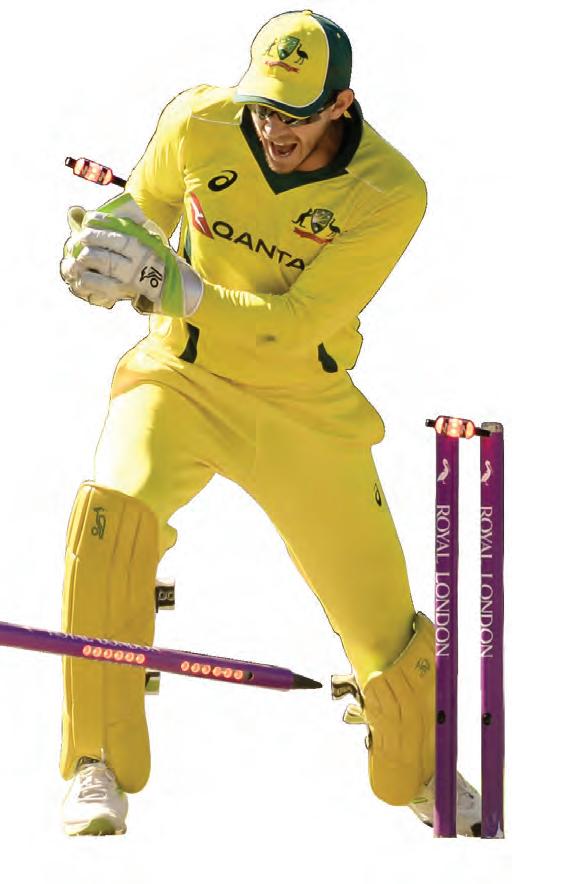

The performance of our national teams is a fundamental measure of our success in Australian cricket’s strategy, and our women’s team continues to hold the number one ranking across all formats. Australia surrendered the No.1 ranking to England when it lost the T20I leg of the Commonwealth Bank Women’s Ashes Series, 2-1, last November, but a 3-0 result against India enabled Australia to reclaim the number one ranking. This short period away from the top is the only time Australia has not been number one in the world for the ICC combined (ODI and T20) team ranking.
The Commonwealth Bank Women’s Ashes is a multi-format, points-based series and was played at boutique stadiums along the east coast of the country and saw Australia retain the Ashes having won on English soil in 2015. Australia once again represented their country with pride, inspiring young cricketers across the country in the process.
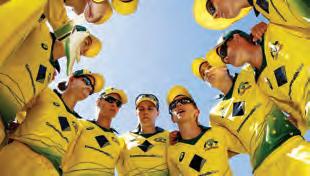
3 X ONE DAY INTERNATIONALS
• Australia won by two wickets at Allan Border Field.
• Australia won by 75 runs (DLS method) at Coffs International Stadium.
• England won by 20 runs (DLS method) at Coffs International Stadium.
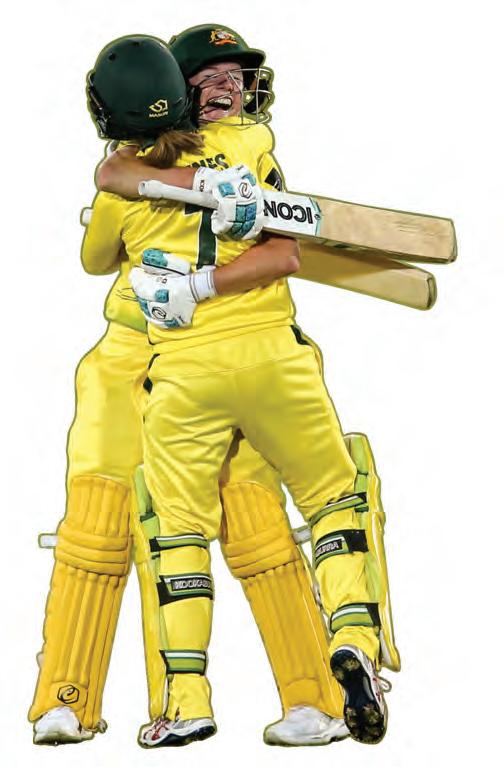

A record 29,158 people attended the seven-match series, the first women’s international series to be ticketed by CA, including a sold-out first match at Brisbane’s Allan Border Field. Total viewership across the six matches broadcast on Channel Nine had an aggregate audience of more than 4 million, with the final ODI televised on the main channel attracting a significant audience. 4.5 million minutes of action was watched across CA’s digital platforms. Fans around the world could also enjoy every ball of the series, thanks to world-class live stream broadcast at North Sydney Oval.

1 X TEST MATCH
• Australia drew with England in the historic first day-night women’s Test at North Sydney Oval.
• Ellyse Perry scored the highest individual score by an Australian in Women’s Tests – 213 not out.

3 X T20 INTERNATIONALS
• Australia defeated England by six wickets at North Sydney.
• England defeated Australia by 40 runs at Canberra.
• England defeated Australia by four wickets at Canberra.


A century from Alyssa Healy steered the Lendlease Breakers to a 51-run win against the Alcohol.Think Again Western Fury in the Final of the WNCL at Blacktown International Sportspark No.2 Oval, which secured a 19th WNCL title for NSW.
NSW’s Rachael Haynes was named WNCL Player of the Year, as the competition’s leading run-scorer having compiled 358 runs at an average of 119.33, including one century and three half-centuries.




AUSTRALIAN CRICKET CELEBRATED A GROUND BREAKING 12 MONTHS, WITH THE GAME REACHING NEW HEIGHTS ON AND OFF THE FIELD AND CONTINUING TO TAKE MAJOR STRIDES TOWARD BECOMING THE LEADING SPORT FOR WOMEN AND GIRLS.
2017-18 proved that women’s sport is in high demand in Australia, with more people attending women’s elite cricket than ever before.
The history of the women’s game extends far. Women have been playing cricket at an international level for more than 80 years. The Australian Women’s Cricket Team played in its first Ashes match in 1934, and they have competed in the short forms of the game since 1973, at the first Women’s Cricket World Cup (two years before the first-ever Men’s World Cup).
THE MANTRA ‘IF SHE CAN SEE IT, SHE CAN BE IT’ HAS BECOME MORE THAN A TAGLINE.
There are numerous factors that contribute to the sporting public’s growing appetite for participating in, attending and watching women’s sport, which has seen unprecedented popularity, particularly in cricket.
• The Australian Women’s Cricket Team has long been a dominant force and is currently No.1 in the world. Add to that the Rebel WBBL which continues to raise the bar as one of the best women’s domestic sporting leagues in Australia. Both forms have been hugely effective in helping to challenge perceptions and demonstrate the amazing career opportunities that cricket now provides talented young female athletes.
• Assisting our elite female players to excel at the game through an elite high-performance system that provides expert support staff and first-class playing and training facilities. It also includes a new Women’s National Performance Squad that enables Australia’s most talented young cricketers to compete and learn from their peers.
Eight years ago, I was living at home with my parents to save on rent and working odd jobs just so that I could keep playing cricket. Now I can make a living from playing the game I love.
Elyse Villani
• National, WBBL and WNCL players were included in the same collective agreement as the men for the first-time last year – they will earn a minimum of $55 million over the five-year period of the MOU, compared with $7 million across the past five years. Cricket’s gender pay equity model with all players starting with the same base hourly rate of pay, represents best practice in world sport.
• The financial backing of key cricket stakeholders to invest in bringing world-class experiences to the cricket community: For Australian cricket to thrive we need to be the sport of choice for male and female participants, fans and volunteers, and to support our elite players. Commercial partners, broadcasters and governments, whose strategies align with ours, provide funding and sponsorship which are invested in developing the right formats, the best possible infrastructure, skill development, and fostering talented players through the entire cricket pathway.
• Promoting the great cricket our women play by increasing the number of matches broadcast on TV. Filming matches in High Definition to support live streaming on the Cricket Network via cricket.com. au and the CA Live app, generating significant social


Our Under 19 Men’s team reached the World Cup Final but was defeated by a strong India side in the final. The tournament saw some impressive individual performances on the global stage, with Jason Ralston (7-15 against Papua New Guinea) breaking the record for the best figures at an U19 World Cup, which was then subsequently broken by leg-spinner Lloyd Pope with an incredible 8-35 in Australia’s remarkable quarter-final win against England.

South Australia claimed the 2017-18 Toyota Futures League title, following a final-round win against Tasmania. In the six-round competition, South Australia was the only team to win four matches outright.
A NSW Metro side – which now features six players on state contracts for 2018-19 – won the Final by 120 runs against the CA XI, led by a century to Jack Edwards at Blundstone Arena.
NSW Metro enjoyed back-to-back wins at the tournament, defeating Queensland in the final at Allan Border Field in October 2017.
Our Under 19 Women’s team competed for the first time since 2003 and claimed its first series win on its inaugural overseas tour. Competing against England Women’s Academy and South Africa Emerging Women, our team defeated the hosts by 21 runs in the tri-series final in Pretoria, with now-Australian Women’s Team squad members Tayla Vlaeminck (6-27 and 21 runs) and Georgia Wareham (43 and 1-17) starring.
ACT/NSW Country claimed the title after defeating New South Wales Metro by one wicket in a nail-biting final in Canberra in December 2017.
Hannah Green (6-22) steered ACT/ NSW Country to a third-consecutive title, defeating hosts South Australia in Adelaide by nine wickets in January 2018.

Eight of Australia’s most promising female cricketers were included in CA’s first inaugural Women’s National Performance Squad (NPS) in 2017.

150 YEARS HAVE PASSED SINCE AN ABORIGINAL CRICKET TEAM WAS THE FIRST SPORTING TEAM FROM AUSTRALIA TO TOUR INTERNATIONALLY. THE UK ABORIGINAL TOUR OF 1868 IS ONE OF AUSTRALIA’S MOST REMARKABLE AND UNTOLD SPORTING STORIES AND WE ARE COMMITTED TO CONTINUING TO SHARE THIS STORY OF ACHIEVEMENT.
13 Aboriginal players made the trip to the UK from Victoria’s West Wimmera region. The Jardwadjali, Gunditjmara and Wotjobaluk men were coached and captained by an ex all-England cricketer, Charles Lawrence. These players were extraordinarily resilient, taking three months to sail to England. The team went through great adversity, losing their teammate all-rounder Bripumyarrimin (King Cole) who tragically fell ill and passed away during the tour in London and there they laid him to rest.
The team played in and won some unbelievable games, winning as many games as they lost, and playing 93 out of a possible 122 days – 14 wins, 14 losses, 19 draws). They enjoyed their cricket, played with incredible spirit and were true pioneers of our game.
A selection of players travelled to Victoria’s West Wimmera region to meet with ancestors and visit key sites significant to the 1868 team. The players were involved in a smoking ceremony at Unaarrimin’s (Johnny Mullagh) water hole and paid their respects. The entire community also came together and built a time capsule which will be opened in 50 years.
In June, the 2018 Aboriginal XI teams toured England to trace the steps taken by those inspiring cricketers back in 1868, and we continued to commemorate this amazing historical achievement with numerous initiatives to build Australia’s awareness of these pioneers and ensure its legacy for years to come.
Both women’s and men’s squads played under the banner of the ‘2018 Aboriginal XI.’ The 2018 men’s players each represented a player from 1868 by carrying their name on their back, and every women’s player wore their own name as a pioneer of the first Indigenous women’s team to tour England.
The players visited Bripumyarrimin’s place of rest in London to pay their respects.
Local dignitaries and school children joined them including High Commissioner to the UK George Brandis, where they unveiled a new, comprehensive information panel at the site in Meath Gardens. They all learnt the story and the children joined a cricket clinic run by the ECB and Indigenous squads.
On field results were strong. The men’s team won all but one game, and the women’s team lost three and won one.
Retracing the footsteps of the boys on the original tour was unbelievable. We got to learn their story and about the courage it took for them to get on a boat and travel over to England – it was pretty powerful stuff.
Brendan Doggett




The photos include a team shot taken in Swansea in 1868 and the iconic poster of individual player shots taken in Hamilton, Victoria prior to departure for the UK in 1868. The recreated photos were taken at Lord’s using the original Indigenous artifacts from a museum in Exeter.
‘Walkabout Wickets’ tells the story of both the 1866 Boxing Day match and the 1868 tour and was designed by Aunty Fiona Clarke who is the greatgreat-granddaughter of Grongarrong (Mosquito), one of the stars of the 1868 team. The artwork has been produced across many mediums including uniforms, a 12m x 12m giant ceremonial silk, stumps and a commemorative pin.

The painting represents past, present and future Aboriginal cricketers. The circles signify the teams’ various meeting places, and the wickets appear with no stumps, to convey that the game continually moves on.
Fiona Clarke

Australia Post paid tribute to the 1868 Aboriginal XI with the release of a postage stamp and post mark to coincide with the 150th anniversary.



CA, along with the State and Territory Associations, released the first Australian Cricket Press for Progress Report, bringing a heightened level of transparency and accountability to cricket’s ambition to be Australia’s leading sport for women and girls.
The report was released on 8 March 2018 to coincide with International Women’s Day and called for each of us to think, act and be gender inclusive. This date also marked the two-year countdown to the ICC Women’s World T20 final.
Borne out of the Australian Cricket Strategy released in 2017, which focused heavily on the critical importance of women and girls to the growth of cricket in Australia going forward, the report clearly outlines how Australian cricket is performing in five key areas:
We intend to release an update of this report annually to demonstrate where we are, and aren’t, making progress to close the gap between where we are, and where we want to be. Our public commitment ensures we will remain open and accountable to ourselves and to the wider community.
We are proud to be making meaningful steps to achieving our goal, and we know that more still needs to be done to


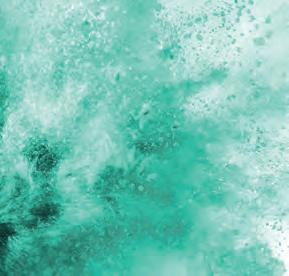



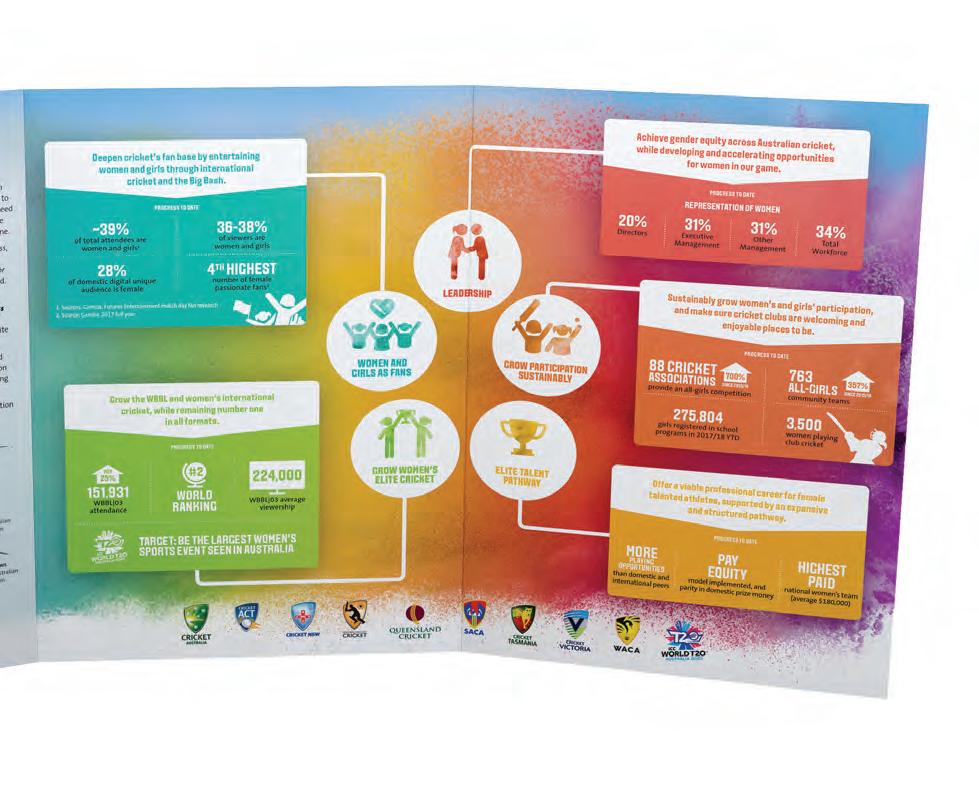
AUSTRALIAN CRICKET’S PRESS FOR PROGRESS REPORT WAS RECOGNISED AS ‘BEST PRACTICE’ BY THE INTERNATIONAL WOMEN’S DAY ORGANISATION FOR 2018.

OUR PRESS FOR PROGRESS REPORT IS AVAILABLE ON CRICKETAUSTRALIA.COM.AU




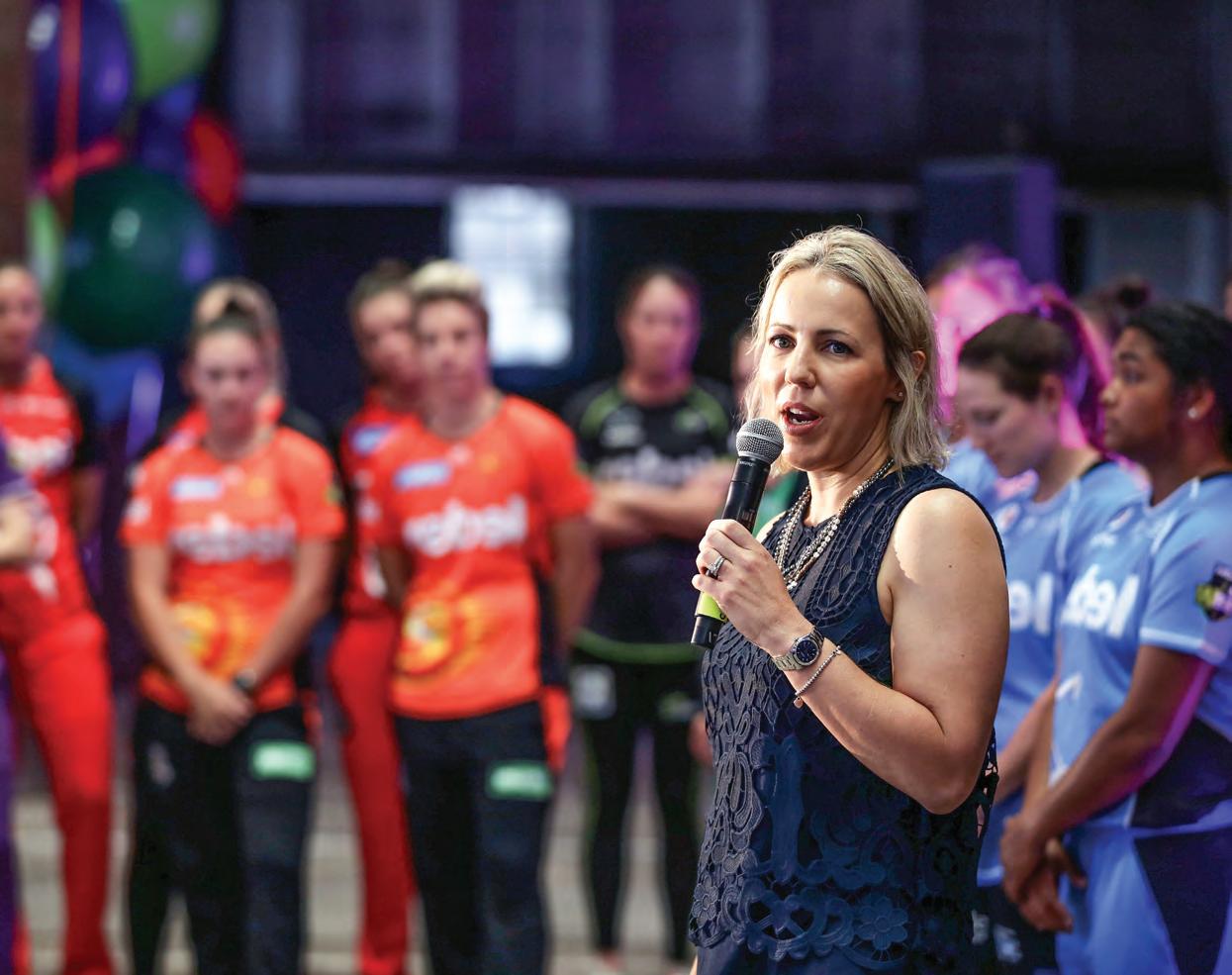



Steve Smith claimed his second Allan Border Medal at the annual awards night for Australian cricket in February this year.
Smith, who was also named Australia’s Test Player of the Year for his dominant 12 months with the bat, was a clear winner for the annual award, having finished well clear of his teammates. The 29-year-old is also the reigning ICC Test Cricketer of the Year.
Star allrounder Ellyse Perry won the Belinda Clark Award for a second time, officially confirming her as Australia’s best cricketer of the past 12 months.
Having previously won the award in 2016, Perry’s win capped off a 12-month period that also saw her named the ICC’s Cricketer of the Year. The 27-year-old amassed 116 votes to win the award by 38 votes.
THE OTHER WINNERS ON THE NIGHT WERE:
Hublot Men’s Test Player of the Year: Steve Smith
Men’s ODI Player of the Year: David Warner
Men’s T20 Player of the Year: Aaron Finch
Women’s Domestic Player of the Year: Beth Mooney
Men’s Domestic Player of the Year: George Bailey
Betty Wilson Young Cricketer: Georgia Redmayne
Bradman Young Cricketer: Jhye Richardson
To celebrate the incredible contribution to cricket by clubs, associations and community organisations, the second annual A Sport for All Community Cricket Awards were held at Junction Oval in Melbourne in May. These awards recognise the volunteers who take pride in delivering quality experiences to the hundreds of thousands of players that enjoy our game each summer.

Jason Schmidt from Tasmania won the Volunteer of the Year award, for his work in improving the lives of people with disabilities. Among a multitude of other voluntary and paid work, Jason has created two disability programs in his own time; the Hurricanes Inclusion Cup and the New Town All Abilities program. This has brought players with all levels of ability together to play cricket in a fun, inclusive environment. Jason is a humble and extremely worthy winner of this award, embodying the true spirit of cricket.
12 awards were on offer across the evening with the two finalists in each category selected from award winners in each state and territory. We acknowledge all our volunteers and congratulate the award winners.
Thank you to the Commonwealth Bank who provides significant support to the A Sport for All program, funding community cricket initiatives across the country that allow cricket to be accessible to all Australians.
Volunteer of the Year: Jason Schmidt (TAS)
Cricket Association of the Year: Orange District Junior Cricket Association (NSW)
Community Club of the Year: Edinburgh Cricket Club (VIC)
Premier Cricket Club of the Year: Adelaide University Cricket Club (SA)
Community Cricket Initiative of the Year: Ballardong Cricket Academy (WA)
Junior Cricket Program of the Year: Souths Junior Cricket Club (QLD)
Community Facility Project of the Year: Sheffield Cricket Club (TAS)
Partner Organisation of the Year: New Horizons Club (TAS)
Community Ambassador of the Year: Sam Atukorala (VIC)
Junior Cricket Champion of the Year: Rob Bailey (QLD)
Community Official of the Year: Ron Buchholz (QLD)
Community Cricket Coach of the Year: Darrel Forrest (QLD)
Recognition of Service: Ross Gregory and Donna Dalby

Sarah Lord –
Our Most Valuable Person (MVP)
The annual MVP Award is CA’s premier employee recognition award. Sarah, Acting Broadcast Manager- International, won the annual award due to demonstrating our organisation’s behaviours.
‘My favourite thing about working at CA is how passionate everyone is about the job they do. I love the excitement of putting on a show and entertainment for the public… being involved in something that provides so much fun and joy and entertainment for fans. Develop really good relationships with your colleagues, because it’s important to respect one another. We all want what’s best for cricket.’

Congratulations to Belinda Clark, our Executive General Manager Community Cricket, on being recognised as Officer of the Order of Australia for services to cricket on and off field as player and administrator, in the Queen’s Birthday honours in June. Belinda had previously been appointed a Member of the Order of Australian 2000.
From being a world-class player and inspirational captain for Australia during her playing days, to being a champion for the growth of cricket in our country (and internationally), Belinda has been and remains one of the finest ambassadors for our sport.
As part of our five-year strategy, we are committed to increasing our investment in the game, particularly in grassroots cricket, to safeguard the future of our sport. To that end, we are redirecting $100 million over the next five years into community cricket.
This has been facilitated in 2017-18 through a restructure of CA, which created a more functional and holistic workforce, and delivered significant savings that will help fund 60 new community-facing employees in the State Associations next year.
The ACA and CA jointly agreed, as part of the MOU signed last year, to commit $13.4 million to the Professional Development and Wellbeing Program for all state and national male and female players.
The Professional Development and Wellbeing Programme is designed to support players through their career
REDIRECTING INTO COMMUNITY CRICKET
$100,000,000
life-cycle – Underage Pathway Players, Contracted Players (Rookies, State, National and Big Bash) and Transitioning Players. Key areas of the Programme are Personal Development, Wellbeing and Health Services, Education and Training, Career Development, and Career Transition. The level of focus and the provision of services will vary according to a player’s current stage in the life-cycle to best support their needs.
CA is committed to being the leading sport for women and girls, with our focus on gender equality extending from the pitch, into our offices. Supported by our Workforce Gender Action Plan and our ongoing involvement in the Male Champions of Change, we are focused on improving our recruitment process and internal policies (such as All Roles Flex and Paid Parental Leave). As at the end of FY18, women represented 44 per cent of all CA employees.
PROFESSIONAL DEVELOPMENT AND WELLBEING PROGRAM $13,400,000
WORKFORCE GENDER DIVERSITY AS AT JULY 2018 56% MALE | 44% WOMEN

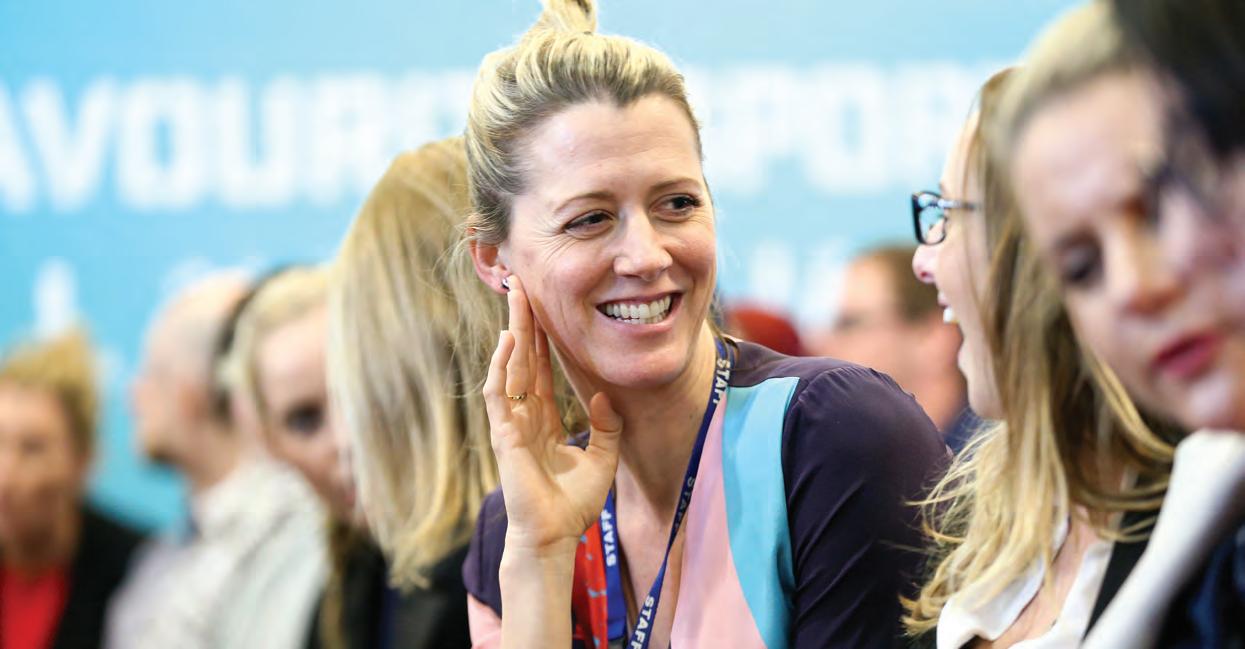

David PEEVER
Chair
CA Director from 2012

Michelle TREDENICK
CA Director from 2015
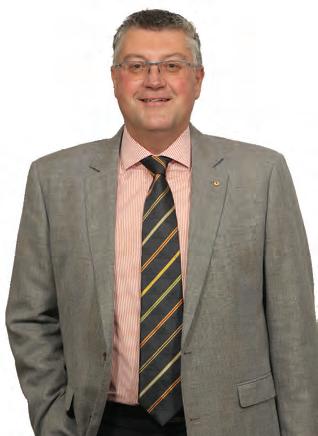
John HARNDEN AM
CA Director from 2016
(AS AT 3 SEPTEMBER 2018)
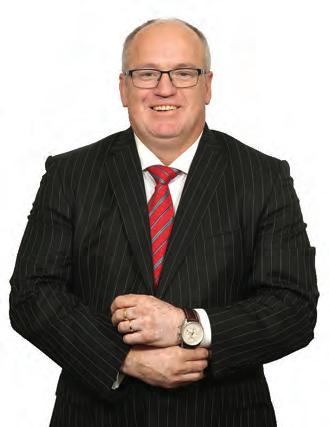

Tony HARRISON

Mark TAYLOR AO
CA Director from 2004-2012, 2013
CA Director from 2008

CA Director from 2011-May 2016, Dec 2016
CA Director from 2002


CA Director from 2012
CA Director from 2018

James SUTHERLAND
Chief Executive Officer
Joined CA in 1998, appointed CEO in 2001

Kevin ROBERTS
Chief Operating Officer
Joined CA’s Board in 2012, appointed to the Executive Team in 2015, appointed COO in 2018

Anthony EVERARD
Executive General Manager, Events and Leagues
Joined CA in 2011, appointed EGM in 2017
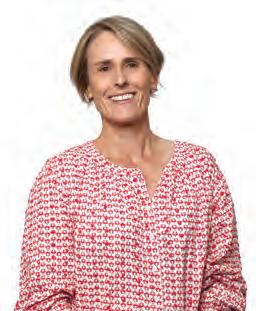
Belinda CLARK

Ben AMARFIO
Executive General Manager, Community Cricket
Joined CA in 2001, appointed EGM in 2018

Nick HOCKLEY
Chief Executive Officer, ICC World T20 2020 LOC Joined CA and the Executive Team in 2017
Raj TAPPER
Head of People and Culture
Joined CA and the Executive Team in 2018

Christine HARMAN
Executive General Manager, Broadcasting, Digital Media and Commercial
Joined CA and the Executive Team in 2012

Pat HOWARD
Executive General Manager, Team Performance
Joined CA and the Executive Team in 2011

General Counsel and Company Secretary Joined CA in 2014 and the Executive Team in 2016

Todd SHAND
Chief Financial Officer
Joined CA in 2010, appointed CFO in 2016

Karina KEISLER
Executive General Manager, Public Affairs
Joined CA and the Executive Team in 2018

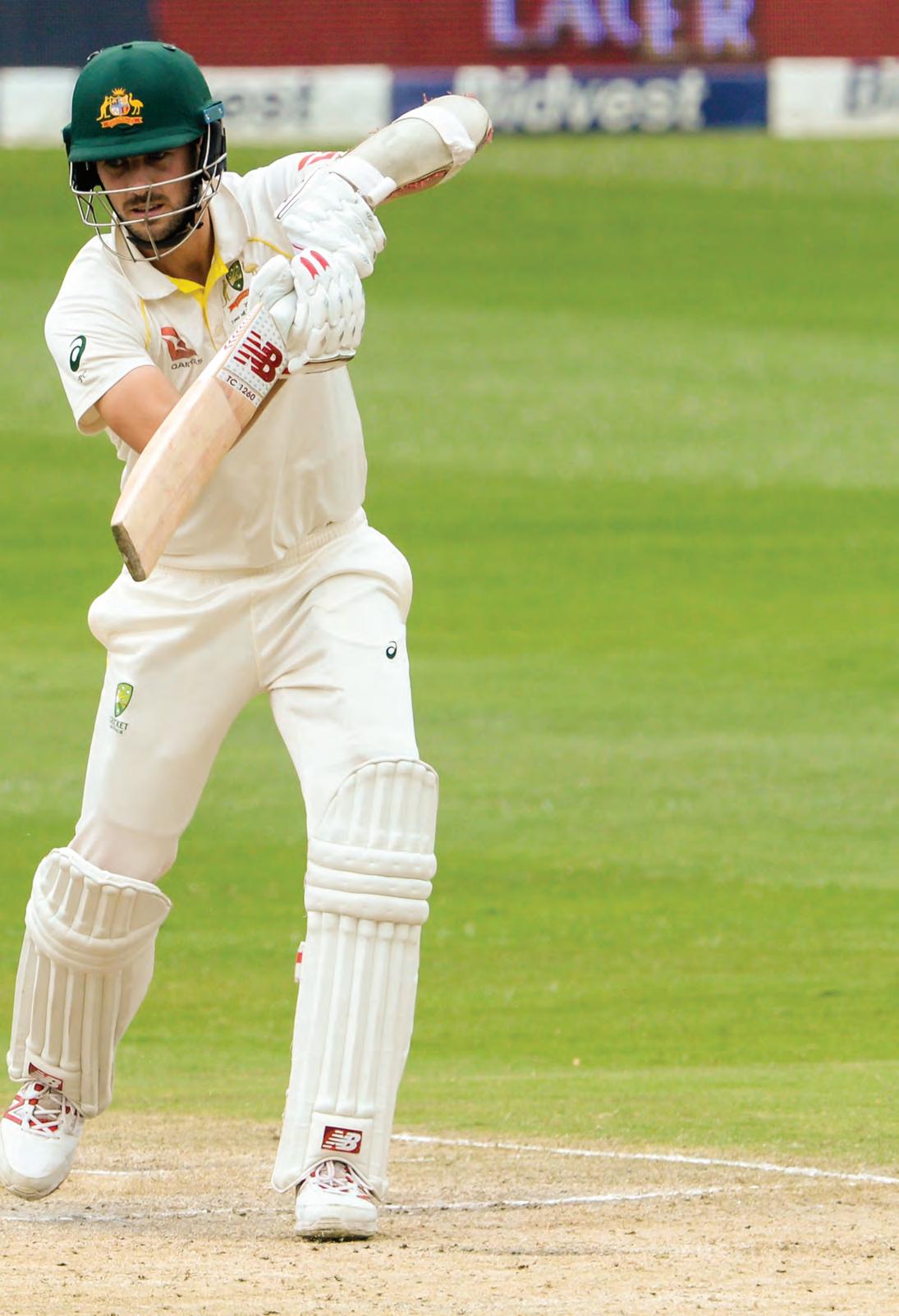



The directors present their report on the results of Cricket Australia for the year ended 30 June 2018.
The principal activity of Cricket Australia is to promote and administer the game of cricket in Australia.
Cricket Australia, incorporated in Victoria, is a company limited by guarantee. Under its constitution, the liability of members is limited to $1,000 per member. At the date of this report, Cricket Australia’s registered office – and principal place of business – is located at 60 Jolimont Street, Jolimont, Victoria.
Under the Australian Cricket Financial Model, Cricket Australia receives all gate and signage revenue from international matches and distributes revenue to States under the minimum guarantee. This simplified model derisks States against volatile movements in gate revenue due to the timing and duration of matches, weather and the competitiveness of touring teams.
During 2017/18, there were three significant events in the context of the financial operations of the organisation:
Cricket Australia signed a new Memorandum of Understanding with the Australian Cricketers’ Association, for the five year period 2017-2022.
The Cricket Australia Board endorsed a new strategic plan for Australian Cricket for 2017 to 2022, with the following key objectives to deliver Australian Cricket’s purpose and vision:
(i) No.1 for fans – we will give fans what they want and grow the Big Bash
(ii) No.1 for participation – we will create the best par ticipation experiences to grow junior cricket
(iii) No.1 in all formats – we will deliver the best high per formance system for players
Performance indicators such as attendance at matches, television ratings, team rankings, digital consumption, participant and volunteer numbers are used to measure Cricket Australia’s performance against its strategy.
Cricket Australia entered into a new six year domestic Broadcast Rights deal for 2019-2024 financial years which will see broader TV coverage and significant increases in revenue flowing into the game. This revolutionary deal will enable increased investment in our strategic priorities, which include being number one for fans and participants and increased investment in community cricket across Australia.
Other than the above, the basis of operations of Cricket Australia did not alter significantly during the 2017/18 year.
With its vision to be Australia’s favourite sport, a sport for all Australians, Cricket Australia continued to promote and administer the game of cricket in Australia, including the men’s and women’s Australian Cricket Teams, the JLT Sheffield Shield, the JLT One-Day Cup, the Men’s Ashes Series, the CommBank Women’s Ashes Series and the KFC Big Bash League and Rebel Women’s Big Bash League, and was also responsible for the development and marketing of the game in Australia.
The net result of operations for the year ended 30 June 2018, after distributions to State Associations of $118,865,240 (2017: $112,242,699) was a net surplus of $8,323,325 (2017: loss $50,820,002). The surplus in net result for the year ended 30 June 2018 was in line with management and budgetary expectations and the Long Range Plan (LRP) four year planning cycle projections.
In June 2018, the Chief Executive Officer, James Sutherland, tendered his resignation and has provided 12 months notice.
Other than the above, there were no significant matters affecting the state of affairs of Cricket Australia which occurred during the financial year.
There has not arisen in the interval between the end of the financial year and the date of this report any item, transaction or event of a material and unusual nature which has arisen that has significantly affected, or may significantly affect the operations of Cricket Australia, the results of those operations, or the state of affairs of Cricket Australia in financial years subsequent to 30 June 2018.
The directors are not aware of any likely developments at this time that would affect the operations of Cricket Australia.
Environmental regulation
The operations of Cricket Australia are not subject to any particular or significant environmental regulations under Commonwealth, State or Territory law.
The following persons held office as directors of Cricket Australia at any time during the year and up to the date of this report.
Director
T T Harrison (appointed 11 October 2002)
M A Taylor AO (appointed 3 June 2013, first tenure 13 September 2004 to 25 September 2012 )
E R Eddings (appointed 1 September 2008)
M S Kasprowicz (appointed 8 December 2016, first tenure 9 August 2011 to 18 May 2016)
J C Hey (appointed 25 October 2012)
D A Peever (appointed 25 October 2012)
M K Tredenick (appointed 18 November 2015)
R L Every AO (appointed 20 November 2015, resigned 4 May 2018)
J Harnden AM (appointed 15 April 2016)
Years Organisational Review & Player Review Subcommittee
People & Culture Committee Audit and Risk Committee
Nominations Committee 2018, Chair Organisational Review & Player Review Subcommittee
Cricket Australia, Chair (appointed 29 October 2015) People & Culture Committee, Chair Nominations Committee 2017, Chair
Committee Nominations Committee
The number of Directors’ meetings held (including meetings of Committees and Directors) and the number of meetings attended (while a Director) by each of the Directors of Cricket Australia during the financial year are:
Full meeting of Directors (incl teleconferences) Audit and Risk Committee1
Meetings held (H) whilst a Director and attended (A)
D A Peever (appointed Chair 29 October 2015)
R Every AO 201788
E R Eddings 23231010
T T Harrison 2323
J C Hey 23211010
M S Kasprowicz 2323
J Harnden AM 232122
M A Taylor AO 2320
M Tredenick 2321106113343
The role of the Audit & Risk Committee is providing advice and assurance on the financial statements and the audit process, and oversight of the effectiveness of the system of corporate governance and risk management.
The purpose of the Nominations Committee is to consider and recommend to the Board of Directors candidates to be elected as Directors of CA in accordance with the Constitution.
The role of the People & Culture Committee, previously the Remuneration Committee, is to review the remuneration packages and policies applicable to executives of the Company, and to implement an appropriate Human Resource Strategy to enable it to execute the Australian Cricket Strategy.
Company Secretary
The Company Secretary is Ms Christine Harman, General Counsel & Company Secretary.
1 Mr John Davies is Chair of the Audit and Risk Committee and is an independent consultant and non-director.
During the financial year, Cricket Australia paid a premium to insure certain officers of Cricket Australia. The insurance policy covers any director or officer of the Company including past, present and future directors, Company Secretary, Chief Executive Officer and employees of Cricket Australia. The liabilities insured include costs and expenses that may be incurred in defending civil or criminal proceedings that may be brought against the Directors and Officers in their capacity as officers of Cricket Australia.
A copy of the auditor’s independence declaration as required under section 307C of the Corporations Act 2001 is set out on page 49.
Signed in Melbourne this 5th day of September, 2018, in accordance with a resolution of the Directors.

D A Peever

E R Eddings Chair, Cricket Australia Director, Cricket Australia

As lead auditor for the audit of Cricket Australia for the year ended 30 June 2018, I declare that to the best of my knowledge and belief, there have been:
(a) no contraventions of the auditor independence requirements of the Corporations Act 2001 in relation to the audit; and
(b) no contraventions of any applicable code of professional conduct in relation to the audit.

Andrew Cronin Melbourne Partner
PricewaterhouseCoopers
PricewaterhouseCoopers, ABN 52 780 433 757
2 Riverside Quay, SOUTHBANK VIC 3006, GPO Box 1331, MELBOURNE VIC 3001 T: 61 3 8603 1000, F: 61 3 8603 1999, www.pwc.com.au
Liability limited by a scheme approved under Professional Standards Legislation.
5 September 2018
Other Comprehensive Income
Items that may be reclassified to profit or loss Changes in the fair value of cash flow hedges
(475) (19,082) (475) Total comprehensive income/(loss) for the year
The above statement of changes in equity should be read in conjunction with the accompanying notes.
AUSTRALIA (COMPANY LIMITED BY GUARANTEE)
The principal accounting policies adopted in the preparation of the financial report are set out below. These policies have been consistently applied to all the years presented, unless otherwise stated. The financial statements are for Cricket Australia (the Company).
(a) Basis of preparation
This general purpose financial report has been prepared in accordance with Australian Accounting Standards and Interpretations issued by the Australian Accounting Standards Board and the Corporations Act 2001. Cricket Australia is a not-for-profit entity for the purpose of preparing the financial statements.
Historical cost convention
These financial statements have been prepared under the historical cost convention, as modified by the revaluation of available for sale financial assets, financial assets and liabilities (including derivative instruments) at fair value through profit or loss, certain classes of property, plant and equipment and investment property.
Critical accounting estimates
The preparation of financial statements in conformity with Australian Equivalent of International Financial Reporting Standards (AIFRS) requires the use of certain critical accounting estimates. It also requires management to exercise its judgement in the process of applying the Company’s accounting policies. The areas involving a higher degree of judgement or complexity, or where assumptions and estimates are significant to the financial statements, are disclosed in Note 3.
(b) Income Tax
The Company is exempt from Australian income tax pursuant to Section 50-45 of the Income Tax Assessment Act 1997.
(c) Rounding of amounts
The amounts in the financial statements have been rounded off in accordance with ASIC Corporations (Rounding in Financial/Directors’ Reports) Instrument 2016/191 to the nearest thousand dollars.
(d) Foreign currency translation
Functional and presentation currency
Items included in the financial statements of the Company are measured using the currency of the primary economic environment in which the entity operates (‘the functional currency’). The financial statements are presented in Australian dollars, which is Cricket Australia’s functional and presentation currency.
Transactions and balances
Foreign currency transactions are translated into the functional currency using the exchange rates prevailing at the dates of the transactions. Foreign exchange gains and losses resulting from the settlement of such transactions and from the translation at year end exchange rates of monetary assets and liabilities denominated in foreign currencies are recognised in the income statement, except when deferred in equity as qualifying cash flow hedges.
(e) Derivative financial instruments
Derivative financial instruments are initially recognised at fair value on the date a derivative contract is entered into and are subsequently remeasured to their fair value at each reporting date. The accounting for subsequent changes in fair value depends on whether the derivative is designated as a hedging instrument, and if so, the nature of the item being hedged. The Company designates certain derivatives as hedges of the cash flows of recognised assets and liabilities and highly probable forecast transactions (cash flow hedges).
The Company documents at the inception of the hedging transaction the relationship between hedging instruments and hedged items, as well as its risk management objective and strategy for undertaking various hedge transactions. The Company also documents its assessment, both at hedge inception and on an ongoing basis, of whether the derivatives that are used in hedging transactions have been and will continue to be highly effective in offsetting changes in fair values or cash flows of hedged items.
The fair values of various derivative financial instruments used for hedging purposes are disclosed in Note 11. Movements in the hedging reserve in shareholders’ equity are shown in Note 21. The full fair value of a hedging derivative is classified as a non-current asset or liability when the remaining maturity of the hedged item is more than 12 months; it is classified as a current asset or liability when the remaining maturity of the hedged item is less than 12 months.
The effective portion of changes in the fair value of derivatives that are designated and qualify as cash flow hedges is recognised in equity in the hedging reserve. The gain or loss relating to the ineffective portion is recognised immediately in the statement of comprehensive income within other income or other expense.
Amounts accumulated in equity are recycled in the statement of comprehensive income in the periods when the hedged item affects profit or loss (for instance when the forecast media income that is hedged takes place).
When a hedging instrument expires or is sold or terminated, or when a hedge no longer meets the criteria for hedge accounting, any cumulative gain or loss existing in equity at that time remains in equity and is recognised when the forecast transaction is ultimately recognised in the statement of comprehensive income. When a forecast transaction is no longer expected to occur, the cumulative gain or loss that was reported in equity is immediately transferred to the income statement.
The cost method of accounting is used for all acquisitions of assets regardless of whether shares or other assets are acquired. Cost is determined as the fair value of the assets given up or liabilities undertaken at the date of acquisition plus costs incidental to the acquisition.
Where settlement of any part of cash consideration is deferred, the amounts payable in the future are discounted to their present value as at the date of the acquisition. The discount rate used is the rate at which a similar borrowing could be obtained under comparable terms and conditions.
Revenue is measured for the major business activities as follows:
(i) International media income is recognised, after allowance for commission and charges, on the completion of the relevant matches covered by the underlying contract. Domestic media income is brought to account on an accruals basis;
(ii) Gate takings are recognised as the relevant percentage of gross takings received for all international matches forwarded by State Associations or venues;
(iii) Investment revenue is recognised on an accruals basis using the effective interest rate method except for managed funds which are discussed in Note 1(u);
(iv) Sponsorships are brought to account on an accruals basis;
(v) Dividends and distributions are brought to account inline with obligations on an accruals basis.
Grants from the government are recognised at their fair value where there is reasonable assurance that the grant will be received and the Company has complied with the attached conditions.
Trade receivables are initially recognised at fair value and subsequently measured at amortised cost, less provision for impairment.
Collectability of trade receivables is reviewed on an ongoing basis. Debts which are known to be uncollectible are written off. A provision for impairment of trade receivables is raised where there is objective evidence that the Company will not be able to collect all amounts due according to the original terms of the receivables. Significant financial difficulties of the debtor, probability that the debtor will enter bankruptcy or financial reorganisation, and default or delinquency in payments (more than 90 days overdue) are considered indicators that the trade receivable is impaired. The amount of the provision is the difference between the assets carrying value and the present value of the estimated future cash flows, discounted at the original effective interest rate. Cash flows relating to short-term receivables are not discounted if the effect of discounting is immaterial. The amount of the provision is recognised in the income statement in other expenses.
Loans and receivables are non-derivative financial assets with fixed or determinable payments that are not quoted in an active market. They are included in current assets, except for those with maturities greater than 12 months after the reporting date which are classified as non-current assets. Loans and receivables are included in trade and other receivables (Notes 7 and 10) in the balance sheet.
All inventories, which consist of uniforms and cricket equipment are finished goods. Inventories are based on purchase price using the ‘first in, first out’ method and are stated at the lower of cost and net realisable value.
Assets that have an indefinite useful life are not subject to amortisation and are tested annually for impairment. Assets that are subject to amortisation are reviewed for impairment whenever events or changes in circumstances indicate that the carrying amount may not be recoverable. An impairment loss is recognised for the amount by which the asset’s carrying amount exceeds its recoverable amount. The recoverable amount is the higher of an asset’s fair value less costs to sell and value in use. For the purposes of assessing impairment, assets are grouped at the lowest levels for which there are separately identifiable cash flows (cash generating units).
(m)
Assets that are identifiable non-monetary without physical substance are recognised as intangible assets. The Company estimates the useful life of the internally generated software to be 5 years based on the expected technical obsolescence of such assets. However, the actual useful life may be shorter or longer than 5 years, depending on future technological innovations.
(n)
The investment property is a two story semi detached Victorian dwelling adjacent to the current business premises and is held for long term organisational growth. The investment property is carried at historical cost less depreciation. The building was fully depreciated by 30 June 2011, with the remainder attributed to land at a cost of $1,525,000. Rental revenue is recognised on a straight line basis over the term of the lease agreement.
Depreciation is calculated on a diminishing value basis to write off the net cost or revalued amount of each item of property, plant and equipment (excluding land) over its expected useful life to the Company. Estimates of remaining useful lives are made on a regular basis for all assets, with annual reassessments for major items. The depreciation rates are as follows:
The cost of improvements to or on leasehold properties is amortised over the remaining period of the lease or the estimated useful life of the improvement, whichever is the shorter. Leasehold improvements being held at balance date are amortised using a diminishing value rate of 20%.
These amounts represent liabilities for goods and services provided to the Company prior to the end of the financial year which are unpaid. The amounts are unsecured and are usually payable within 30 days of recognition.
Provisions are recognised when the Company has a present legal or constructive obligation as a result of past events. It is more likely than not that an outflow of resources will be required to settle the obligation and the amount has been reliably estimated. Provisions are not recognised for future operating losses.
(s) Employee benefits
(i) Wages, salaries and annual leave
Liabilities for wages and salaries, including nonmonetary benefits, annual leave expected to be settled within 12 months after the end of the period in which the employees render the related service are recognised in respect of employees’ services up to the end of the reporting period and are measured at the amounts expected to be paid when the liabilities are settled. The liability for annual leave is recognised in the provision for employee benefits. All other short-term employee benefit obligations are presented as payables.
(ii) Long service leave
The liability for long service leave and annual leave, which is not expected to be settled within 12 months after the end of the period in which the employees render the related service, is recognised in the provision for employee benefits and measured as the present value of expected future payments to be made in respect of services provided by employees up to the end of the reporting period using the projected unit credit method. Consideration is given to expected future wage and salary levels, experience of employee departures and periods of service. Expected future payments are discounted using market yields at the end of the reporting period on corporate bond rates with terms to maturity and currency that match, as closely as possible, the estimated future cash outflows.
(iii) Player payments adjustments
A liability is recognised and is measured as the expected future payments to be made to players in
relation to entitlements arising for service up to balance date, determined in accordance with the 2017-2022 Memorandum of Understanding. The player payment adjustment in any relevant contract year will represent any shortfall in the Player Payments Pool (PPP) that has arisen due to actual Australian Cricket Revenue (ACR) exceeding the Australian Cricket Revenue Estimate, less any excess in the PPP that has arisen in any relevant contract year due to the ACR Estimate exceeding actual ACR.
For cash flow statement presentation purposes, cash and cash equivalents includes deposits at call which are readily convertible to cash on hand and are subject to an insignificant risk of changes in value, net of outstanding bank overdrafts.
Investments in managed funds are designated at ‘fair value through profit or loss’ on initial recognition and are initially recognised at fair value, being the cost of acquiring units in the managed funds. At balance date, the investment is revalued to its fair value, which reflects the redemption price of units held. Movements in the fair value are included in the income statement.
Investments in bank bills, bonds and deposits are classified as ‘held to maturity’ on initial recognition and are initially recognised at fair value, being the cost of acquiring the investment, including transaction costs. At balance date, the investment is carried at amortised cost with interest income recognised using the effective interest rate method.
(v) Retirement schemes
The Company operates a defined benefit scheme (Australian Cricketers’ Retirement Account) and a postemployment plan (Players’ and Umpires’ Retirement Benefits Schemes). Liabilities are recognised based on set rates and the relevant player’s or umpire’s service to the Company and State Associations. The portion of entitlements expected to be paid within 12 months is recognised as a current liability.
(i) Players’ and Umpires’ Retirement Benefits
This scheme covers player service up to 2001 and umpires. Payment of the benefit is entirely at the discretion of the Company and occurs after retirement. When payment is made, interest at commercial bank bill rates is applied for the period between retirement and payment. On 1 July 2001 the Players’ and Umpires’ Retirement Benefits Scheme (P&URBS) was replaced by the Australian Cricketers’ Retirement Account (ACRA). All entitlements accrued up until 30 June 2001 under this scheme remain payable. The Company will determine the umpire’s value of credits to be made for specified cricket matches annually and will confirm those matches which will qualify for credits. Umpire’s benefits scheme payouts are based on accrued value credits earned until retirement from umpiring.
(ii) Australian Cricketers’ Retirement Account
This scheme covers player service since 1 July 2001. Contributions from the PPP are made to the Australian
Cricketers’ Retirement Account (ACRA) in order to fund entitlements and the balance of the account is recorded as restricted cash and investments in the balance sheet. Interest earned on the account is recognised as income in the income statement. The liability is measured as the present value of expected future payments to be made in respect of entitlements earned up to the reporting date, giving consideration to expected timing of retirements, with expected future payments discounted using corporate bond yields. The increase/ decrease in the present value of future entitlements is included in the income statement.
Distributions are made to the members of the Company for state player payments and game development. Distributions are recognised as an expense to the extent that payment is required by virtue of the By Laws. Clause 3 of the By Laws of the Company permits the distribution from time to time of surplus funds (over and above the obligations under the By Laws) provided it is for the purposes of promoting and developing the game of cricket. Such discretionary distributions are recognised directly as adjustments against accumulated funds.
The Company has entered into various leases which have been treated as operating leases as the lessor effectively retains substantially all risks and benefits of ownership. Operating lease payments are charged to the income statement on a straight line basis over the lease term.
Revenues, expenses and assets are recognised net of the amount of associated GST, unless the GST incurred is not recoverable from the Australian Taxation Office (ATO). In this case it is recognised as part of the cost of acquisition of the asset or as part of the expense.
Receivables and payables are stated inclusive of the amount of GST receivable or payable. The net amount of GST recoverable from, or payable to, the ATO is included with other receivables or payables in the balance sheet.
Cash flows are presented on a gross basis. The GST components of cash flows arising from investing or financing activities which are recoverable from, or payable to the ATO, are presented as operating cash flow.
AASB 9 Financial Instruments replaces the existing guidance in AASB 139 Financial Instruments: Recognition and Measurement. AASB 9 became mandatory for the Company’s financial statements for the period beginning on or after 1 January 2018 and could change the classification and measurement of financial assets, and the measurement of impairment on financial instruments. The new standard also introduces expanded disclosure
requirements and changes in presentation. The Company does not expect the new standard to have a significant impact on the classification and measurement of its financial assets and liabilities.
AASB 15 Revenue from Contracts with Customers establishes a comprehensive framework based on the principle that revenue is recognised when control of a good or service transfers to a customer. It replaces existing revenue recognition guidance including AASB 118 Revenue, and becomes mandatory for the Company’s financial statements for the period beginning on or after 1 January 2019. The Company does not plan to adopt this standard early and the extent of the impact has not been determined, with a more detailed assessment of the impact to be made over the next 12 months.
AASB 16 Leases introduces a single lessee accounting model under the new standard, an asset (the right to use the leased item) and a financial liability to pay rentals as recognised for all assets with a term of more than 12 months, unless the underlying asset is short-term and of low value. A lessee is required to recognise a right-of-use asset representing its right to use the underlying leased asset and a lease liability representing its obligations to make lease payments. This standard is applicable for financial years commencing on or after 1 January 2019. Management have not yet assessed the impact of adopting this standard for the Company’s operating leases.
The Company’s activities expose it to a variety of financial risk’s, market risk (including foreign exchange risk, fair value interest rate risk and price risk), credit risk, liquidity risk and cash flow interest rate risk. The Company’s overall risk management program focuses on the unpredictability of financial markets and seeks to minimise potential adverse effects on the financial performance of the Company. The Company uses derivative financial instruments such as foreign exchange forward contracts and foreign exchange call options to hedge certain risk exposures.
Risk management is carried out by the Hedging Management Committee and Finance & Procurement department under policies approved by the Audit and Risk Committee and Board of Directors. The Hedging Committee and the Finance & Procurement department identifies, evaluates and hedges financial risks in close cooperation with the Company’s operating units. The Board provides written principles for overall risk management, as well as written policies covering specific areas, such as mitigating foreign exchange, interest rate and credit risks, use of derivative financial instruments and investing excess liquidity.
Foreign exchange risk
Foreign exchange risk arises when future commercial transactions and recognised assets and liabilities are denominated in a currency that is not the entity’s functional currency.
The Company operates internationally and is exposed to foreign exchange risk arising from currency exposures due to the sale of international media rights and tours overseas. These exposures occur primarily in US dollars and Great British Pounds. The Company’s risk management policy is measured by determining the sensitivity of cashflows to changes in the foreign exchange rate, with the volume of risk determined by contracts and estimated revenues.
The Company has entered into an agreement with the Company’s banker to manage foreign exchange risk that permits the Company to take out individual forward exchange contracts or call options that match the specific arrangements at an agreed exchange rate. The agreement is non-transferable and contains no minimum or maximum level of forward exchange rates contracts or call options that can be entered into. External foreign exchange contracts are designated as hedges of foreign exchange risk on specific assets, liabilities or future transactions on a gross basis.
(COMPANY LIMITED BY GUARANTEE)
The carrying amounts of the Company’s financial assets and liabilities are denominated in Australian dollars except as set out below:
Based on the financial instruments held at 30 June 2018, had the Australian dollar weakened/ strengthened by 100 basis points against the US dollar and Great British Pound with all other variables held constant, the Company’s surplus for the year would have not changed, mainly as a result of no exposure to foreign exchange gains / losses on translation of foreign currency instruments as detailed in the above table. Equity would have been $792,636 lower/$871,900 higher (2017: $2,515,797 lower/$2,767,376 higher) had the Australian dollar weakened/ strengthened by 100 basis points against the US dollar and Great British Pound, arising mainly from foreign exchange contracts designated as cash flow hedges.
A sensitivity of 100 basis points was selected following a review of historic trends.
The credit risk on financial assets of the Company which have been recognised on the Balance Sheet is generally the carrying amount, net of any provisions for impairment. Credit risk arises from the potential failure of counterparties to meet their obligations under the relevant contracts at maturity. An exposure therefore exists with respect to the forward exchange contracts discussed above, as these are all held with the Company’s banker.
For all bank deposits, only independently rated parties with a minimum rating of ‘AA’ are accepted. Managed fund investments are only held with independently related parties with a minimum of three stars.
Apart from this, the Company has no significant concentrations of credit risk. The Company has policies in place to ensure that licensing and sponsorship arrangements are made to organisations with an appropriate credit history.
The maximum exposure to credit risk at the reporting date is the carrying amount of the financial assets.
During the year, the following gains/(losses) were recognised in profit or loss in relation to impaired receivables.
Impairment losses – individually impaired receivables
movement in provision for impairment
Reversal of previous impairment losses
AUSTRALIA (COMPANY LIMITED BY GUARANTEE)
Liquidity risk
Prudent liquidity risk management implies maintaining sufficient cash and marketable securities to meet commitments associated with financial instruments. The Company manages liquidity risk through the preparation of cash projections and monthly review of investments, including cash funds.
Interest rate risk
With the exception of cash and cash equivalents, the assets and liabilities of the Company are non-interest bearing. Details of interest rate exposure are contained in the relevant notes. In addition, discount rates used in the determination of provisions for employee entitlements may be impacted by changes in interest rate.
Fair value measurements
The fair value of financial assets and financial liabilities must be estimated for recognition and measurement or for disclosure purposes.
As of 1 July 2009, the Company has adopted the amendment to AASB 7 Financial Instruments: Disclosures which requires disclosure of fair value measurements by level of the following fair value measurement hierarchy:
(a) quoted prices (unadjusted) in active markets for identical assets or liabilities (level 1);
(b) inputs other than quoted prices included within level 1 that are observable for the asset or liability, either directly (as prices) or indirectly (derived from prices) (level 2) and;
(c) inputs for the asset or liability that are not based on observable market data (unobservable inputs) (level 3). Includes fair value estimate for investment property, derived using the sales comparison approach, the demand if the property was offered to the market for sale. The key inputs under this approach are the dollar value per square metre equivalent from current year sales of comparable lots of land in the area (location and size).
The following tables present the Company’s assets and liabilities measured and recognised at fair value.
The fair value of financial instruments traded in active markets (such as publicly traded derivatives, and trading and available-for-sale securities) is based on quoted market prices at the end of the reporting period. The quoted market price used for financial assets held by the group is the current bid price. These instruments are included in level 1.
The fair value of financial instruments that are not traded in an active market (for example, over-the-counter derivatives) is determined using valuation techniques. The company uses a variety of methods and makes assumptions that are based on market conditions existing at the end of each reporting period. Quoted
market prices or dealer quotes for similar instruments are used to estimate fair value for long-term debt for disclosure purposes. Other techniques, such as estimated discounted cash flows, are used to determine fair value for the remaining financial instruments. The fair value of interest rate swaps is calculated as the present value of the estimated future cash flows. The fair value of forward exchange contracts is determined using forward exchange market rates at the end of the reporting period. These instruments are included in level 2 and comprise debt investments and derivative financial instruments. In the circumstances where a valuation technique for these instruments is based on significant unobservable inputs, such instruments are included in level 3.
AUSTRALIA (COMPANY LIMITED BY GUARANTEE)
The Company makes estimates and assumptions concerning the future. The resulting accounting estimates will, by definition, seldom equal the related actual results. The estimates and assumptions that have a significant risk of causing a material adjustment to the carrying amounts of assets and liabilities within the next financial year are discussed below.
The Company raises a provision annually for future ACRA entitlements based on calculations performed by a qualified actuary, in accordance with the accounting policy stated in Note 1(v). These calculations require the use of assumptions in relation to the expected timing of retirements and discounting of the future cash flows. Refer Note 19 for details of the key actuarial assumptions.
Provision for Employee Entitlements – Player payment adjustments
The Company recognises a provision for the expected longterm benefits arising under a revenue share agreement with the Australian Cricketers’ Association. To the extent that actual revenue varies from current forecasts over the agreed term, the ultimate amount payable will vary. Refer Note 17 for further details.
No critical judgements were made in applying the entity’s accounting policies for the year ended 30 June 2018.
Where necessary, comparative information has been reclassified to achieve consistency in disclosure with current financial year amounts and other disclosures. The impact of these reclassifications is not material, and has not resulted in any change to surplus / (deficit) or net assets.
From
(a) Government Grants
Government Grants relate primarily to monies received from the Australian Sports Commission which are required to be expended on game development. There are no unfulfilled conditions or other contingencies attached to these grants.
The net result includes the following specific items:
As discussed in Note 1(b), the Company is exempt from tax and no tax is applicable to these items.
(a) Past due but not impaired
As of 30 June 2018, trade receivables of $4,678,357 (2017: $6,250,477) were past due but not impaired. These relate to a number of independent customers for whom there is no recent history of default. The ageing analysis of these trade receivables is as follows:
(b) Foreign exchange and interest rate risk
Information about the entity’s exposure to foreign currency risk and interest rate risk in relation to trade and other receivables is provided in Note 2.
(c) Fair value and credit risk
Due to the short-term nature of these receivables, their carrying amount is assumed to approximate their fair value.
The maximum exposure to credit risk at the reporting date is the carrying amount of each class of receivables mentioned above. Refer to Note 2 for more information on the risk management policy of the entity and the credit quality of the entity’s trade receivables.
(d) Accrued Income
As at 30 June 2018, accrued income is based on a schedule of international revenue obligations where a timing difference exists between cash received and delivery of obligations.
(e) Receivable from related party
As at 30 June 2018, receivable from related party includes an advance on distributions to Queensland Cricket of $836,460.
(f) Receivables due from Members
As at 30 June 2018, debtors include amounts receivable from Members of $3,531,852 (2017: $1,675,754).
(a) Fair value and credit risk
Due to the short-term nature of these assets, their carrying amount is assumed to approximate their fair value.
The maximum exposure to credit risk at the reporting date is the carrying amount of each class of assets mentioned above. Refer to Note 2 for more information on the risk management policy of the entity and the credit quality of the entity’s trade receivables.
As at 30 June 2018, the receivable from related party relates to a strategic loan made to Cricket Tasmania in December 2015, with repayments commencing on 1 November 2019.
In the year ended 30 June 2018, a unrealised gain of $127,690 (2017: $2,184,133 gain) in forward exchange contracts was transferred to the income statement. Additional financial instruments purchased during 2018 totalled $546,950 (2017: $5,123,704).
From time to time, the Company enters into derivative financial instrument contracts to mitigate foreign exchange risk in respect to overseas revenues in accordance with the Company’s financial risk management policies (refer to Note 2). The Company has assessed the contracts for hedge effectiveness with the deferred gain in relation to those contracts assessed as effective hedges recognised in the hedging reserve at balance date, in accordance with accounting policy Note 1(e). The contracts are timed to mature when revenues are due to be received and are treated as cash flow hedges. At balance date, the details of outstanding derivative financial instrument contracts are:
Investments at fair value through profit or loss include the following:
The majority of the company’s listed equity securities are publicly traded and are included either in the ASX 200 Index or the NYSE international 100 Index.
Based on the assumption that the value of the Company’s investments in managed funds correlate to movements in the ASX 200 Index and the NYSE international 100 Index, had the ASX 200 Index and the NYSE international Index increased / decreased by 100 basis points (2017:100 basis points) the Company’s net assets would have increased / decreased by $850,231 (2017: $777,902) based on the year end balances.
(a) Risk exposure
Information about the entity’s exposure to credit risk, foreign exchange and price risk is provided in Note 2.
Intangible assets consists of capitalised software development costs being an internally generated intangible asset.
(a)
on the investment property is disclosed in Note 4.
(b) Fair value of investment property
The investment property was purchased during the year ended 30 June 2010 and is recognised at cost. The indicative fair value was $2,650,000 based on independent assessments made by a member of the Australian Property Institute at 30 June 2017, up from the $2,200,000 independent assessment made on 30 June 2015. The next independent assessment is due on 30 June 2019.
(c) Leasing Arrangements
The investment property lease expired on 14 February 2017, with the lease of the investment property from this date being on a month by month basis.
As at 30 June 2018, trade payables include amounts due to Members of $1,770,126 (2017: $803,518).
(a) Player payments adjustment
Cricket Australia entered into an arrangement with the Australian Cricketers’ Association which entitles professional cricketers to a certain share of Australian Cricket Revenue (ACR) over a five year period to 30 June 2022.
This share consists of a guaranteed percentage plus a performance percentage. The combination of these two must not exceed an agreed percentage cap over the 5 year period.
To the extent that ACR exceeds an agreed estimate, Cricket Australia is required to pay an adjustment to players. A provision for player payments is recognised at 30 June 2018.
As disclosed in Note 1(v), the ACRA, P&URBS employee entitlements are defined benefit scheme and post-employment plans respectively.
The reconciliation of the movement in the present value of the plans is as follows:
Although neither scheme has plan assets as defined by AASB119: Employee Benefits, under an agreement with the Australian Cricketers’ Association, Cricket Australia is required to hold restricted assets to fund ACRA. No restricted funds are held for P&URBS. The current portion of the liability is determined based on expected retirements in the next financial year.
The level of contribution to ACRA is reviewed annually by a qualified actuary with the purpose of ensuring that ACRA is fully funded. The contribution levels are based on the actuarial assumptions identified below.
The principal actuarial assumptions used in estimating the present value of the defined benefit obligations and contribution levels for ACRA are:
growth in value of ACRA entitlements (both match and contract)
The Hedging Reserve is used to record the deferred gains on effective cash flows as described in Note 1(e).
Cricket Australia is incorporated in Victoria as a company limited by guarantee. Under its constitution, the liability of members is limited to $1,000 per member and the Board cannot declare a dividend to members, however grants may be made in accordance with the By Laws.
Distributions paid to Members have been recognised in accordance with the accounting policy disclosed in Note 1(w). As Cricket Australia is exempt from income tax (refer Note 1(b)), distributions are unfranked and no franking account is maintained.
AUSTRALIA (COMPANY LIMITED BY GUARANTEE)
The names of each person who were Directors of Cricket Australia at any time during the financial year are as follows:
E R Eddings, T T Harrison, J C Hey, M S Kasprowicz, D A Peever, M A Taylor AO, R L Every AO, J Harnden AM, and M K Tredenick
(i) Key management personnel compensation
Key management personnel compensation for the years ended 30 June 2018 and 2017 is set out below. The key management personnel are all the Directors of the Company and the executives with the authority for the strategic direction and management of the Company.
(ii) Payments to and from members
In accordance with Cricket Australia’s By Laws, payments are made to Members to assist with their costs. The levels of distributions are made to States to reflect equal general funding, with additional funding, recognising profits States would have generated from individual activities.
Cricket Australia undertook transactions with each of the Members during the year in the normal course of business.
Under the current By Laws, Cricket Australia has committed to provide distributions to the States in the 2018/19 financial year, forecast as $123,841,557 (2018: $117,000,000) at balance date.
(iii) Usage Agreement Queensland Cricket Association
During the year ended 30 June 2010, Cricket Australia signed an agreement with the Queensland Cricket Association for use of facilities at the National Cricket Centre, Brisbane. Details of payments anticipated under this agreement are included in Notes 18 & 20.
Lease Commitments Commitments
The directors are not aware of any other matter or circumstance not otherwise dealt with in this report that has significantly or may significantly affect the operations of Cricket Australia.
(COMPANY LIMITED BY GUARANTEE)
In the Directors’ opinion:
(a) the financial statements and notes set out on pages 50 to 76 are in accordance with the Corporations Act 2001, including:
– complying with Accounting Standards, the Corporations Regulations 2001 and other mandatory professional reporting requirements; and
– giving a true and fair view of the Company’s financial position as at 30 June 2018 and of its performance, as represented by the results of its operations, changes in equity and its cash flows, for the financial year ended on that date; and
(b) there are reasonable grounds to believe that the Company will be able to pay its debts as and when they become due and payable; and
This declaration is made in accordance with a resolution of the Directors.

D A Peever

E R Eddings Chair, Cricket Australia Director, Cricket Australia
5 September 2018 Melbourne

To the members of Cricket Australia
Our opinion
In our opinion:
The accompanying financial report of Cricket Australia (the Company) is in accordance with the Corporations Act 2001, including:
(a) giving a true and fair view of the Company's financial position as at 30 June 2018 and of its financial performance for the year then ended
(b) complying with Australian Accounting Standards and the Corporations Regulations 2001
What we have audited
The financial report comprises:
the balance sheet as at 30 June 2018
the statement of comprehensive income for the year then ended
the statement of changes in equity for the year then ended
the cash flow statement for the year then ended
the income statement for the year then ended
the notes to the financial statements, which include a summary of sign ificant accounting policies
the directors’ declaration.
Basis for opinion
We conducted our audit in accordance with Australian Auditing Standards. Our responsibilities under those standards are further described in the Auditor’s responsibilities for the au dit of the financial report section of our report.
We believe that the audit evidence we have obtained is sufficient and appropriate to provide a basis for our opinion.
Independence
We are independent of the Company in accordance with the auditor independence requirements of the Corporations Act 2001 and the ethical requirements of the Accounting Professional and Ethical Standards Board’s APES 110 Code of Ethics for Professional Acco untants (the Code) that are relevant to our audit of the financial report in Australia. We have also fulfilled our other ethical responsibilities in accordance with the Code.
The directors are responsible for the other information. The other information comprises the information included in the Financial Report for the year ended 30 June 2018, including the Report of the Directors, but does not include the financial report and our auditor’s report thereon.
Our opinion on the financial report does not cover the other information and accordingly we do not express any form of assurance conclusion thereon.
PricewaterhouseCoopers, ABN 52 780 433 757
2 Riverside Quay, SOUTHBANK VIC 3006, GPO Box 1331, MELBOURNE VIC 3001 T: 61 3 8603 1000, F: 61 3 8603 1999, www.pwc.com.au
Liability limited by a scheme approved under Professional Standards Legislation.

In connection with our audit of the financial report, our responsibility is to read the other information identified above and, in doing so, consider whether the other information is materially inconsistent with the financial report or our knowledge obtained in the audit, or otherwise appears to be materially misstated.
If, based on the work we have performed on the other information obtained prior to the date of this auditor’s report, we conclude that there is a material misstatement of this other information, we are required to report that fact. We have nothing to report in this regard.
The directors of the Company are responsible for the preparation of the financial report that gives a true and fair view in accordance with Australian Accounting Standards and the Corporations Act 2001 and for such internal control as the directors determine is necessary to enable the preparation of the financial report that gives a true and fair view and is free from material misstatement, whether due to fraud or error.
In preparing the financial report, the directors are responsible for assessing the ability of the Company to continue as a going concern, disclosing, as applicable, matters related to going concern and using the going concern basis of accounting unless the directors either intend to liquidate the Company or to cease operations, or have no realistic alternative but to do so.
Our objectives are to obtain reasonable assurance about whether the financial report as a whole is free from material misstatement, whether due to fraud or error, and to issue an auditor’s report that includes our opinion. Reasonable assurance is a high level of assurance, but is not a guarantee that an audit conducted in accordance with the Australian Auditing Standards will always detect a material misstatement when it exists. Misstatements can arise from fraud or error and are considered material if, individually or in the aggregate, they could reasonably be expected to influence the economic decisions of users taken on the basis of the financial report.
A further description of our responsibilities for the audit of the financial report is located at the Auditing and Assurance Standards Board website at: http://www.auasb.gov.au/auditors_responsibilities/ar4.pdf. This description forms part of our auditor's report.

PricewaterhouseCoopers

Andrew Cronin
Partner
Melbourne
5 September 2018

OUR PURPOSE IS TO INSPIRE EVERYONE TO LOVE CRICKET, AND OUR VISION IS FOR CRICKET TO BE AUSTRALIA’S FAVOURITE SPORT – A SPORT FOR ALL AUSTRALIANS.
HERE’S
A STORY ABOUT
A
PARTICIPANT AND
FAN THAT BRINGS
OUR PURPOSE AND VISION TO LIFE IN AN INSPIRING WAY…
I am a professional Australian soldier and have spent most of my adult life in the Army, and almost all of that has been with military Special Operations, specifically the SAS. In that time, I have amassed nearly 1000 days on active service in places such as Afghanistan, Iraq and Timor Leste.
Like so many soldiers, I have been shot at, blown up, busted and broken, psychologically and cognitively drained, socially dislocated and spiritualty and ethically challenged. However, my journey has been less about combat and courage, and more about adventure and determination.
During operational tours it became my habit to carry a cricket bat and balls wherever we deployed, and we used cricket to unwind in the downtimes. Little did I know that it would become so much more than that.
After 11 deployments I have collected 11 bats and they bear the signatures of the many soldiers who have served, fought and died alongside me on the way. And when opportunity presented I also secured the signatures of prominent politicians, Governor’s General, Generals and even members of the Royal family.
Soldiers often have traumatic experiences, which is part and parcel of serving. Some experiences are more harrowing than others and have a deep impact on our people and teams. If a couple of us started a game of cricket, it wouldn’t be long before everyone gathered around, and the first smile would crack, and then there would be a laugh and then a joke, and you could feel the tension slowly recede. It was a great way to unwind our coiled springs of tension.
Cricket wasn’t just for us though. We would also play games wherever we worked, using cricket to connect with locals on the streets (in places like Kabul and Baghdad – Afghanis love their cricket, Iraqis were more intrigued). We formed bonds that also helped us with local security and to collect intelligence.
During one particular deployment, whilst resupplying and resting out of reach of enemy ground fire, we’d play cricket. On
one occasion we heard our enemy on the radio commenting on our cricketing prowess and how rubbish they thought we were – “poor bowlers and batsmen”. So, we challenged them – asked them to come down out of the hills for a game of cricket with us, with the loser having to leave the valley, but unfortunately, and predictably, they declined.
Cricket was a great constant for me across 20 plus years, particularly during those eleven deployments. I had cricket to go to while deployed overseas and, much to my family’s chagrin, while at home. The game isn’t just a fun and enjoyable pastime, cricket has been therapeutic for me, and in particular has become the ‘spine’ to my personal military narrative.
Cricket became a scaffold on which I was able to hang my journey and experience. A vehicle that would provide a purpose when there seemed little. An escape when one was needed. A conversation when silence needed breaking. A way to break down barriers, connect with people and build relationships. A book end to protracted time away from family and friends. It provided a kind of therapy between deployments as I built a career with the Applecross Cricket Club. I even took a great Australian tradition to a new level in building an ‘MCG’ (Moffitt Cricket Ground) Members Stand in my backyard where I would host serious fixtures of backyard Test Cricket, raising money for Muscular Dystrophy and other charities. Whether on or in-between deployment, cricket provided a harbour of resilience and communication, of humour and social interaction, and ultimately would even transcend the death of my colleagues.
Now, as I move into the next phase of my life, I’m delighted to play a role in helping cricket to be the number one participation sport for women and girls in my work with the Vic Spirit and Cricket Victoria’s Premier Cricket competition. Australian cricket’s purpose, which is to inspire everyone to love cricket, and its vision of cricket being Australia’s favourite sport, a sport for all Australians, is a natural fit with my story and passion. I know first-hand the power of our game and really do see cricket as a vehicle for profound social change. I’m a believer.
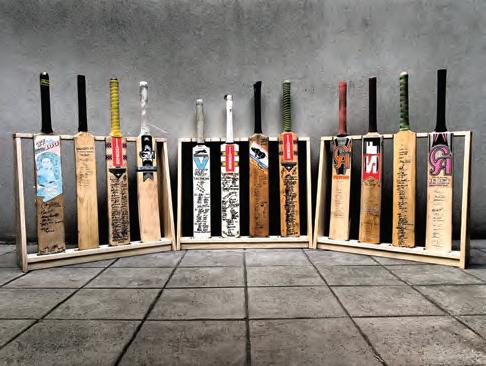

A self-professed cricket tragic, Sergeant H is also working to make sure cricket is the number one sport in Australia and the number one participation sport for women and girls. He has been working with the Vic Spirit and Cricket Victoria on gender equity in premier cricket and giving presentations and workshops across Victoria. He has loved the “life changing” experience and looks forward to continuing to contribute to the game that’s given him so much.
The Soldiers’ XI exhibition, comprising Sergeant H’s collection of bats, photos, gear and souvenirs, was exhibited at The Shrine of Remembrance in Melbourne for 12 months during 2017-18. Keep an eye out for the collection to appear elsewhere in Melbourne.